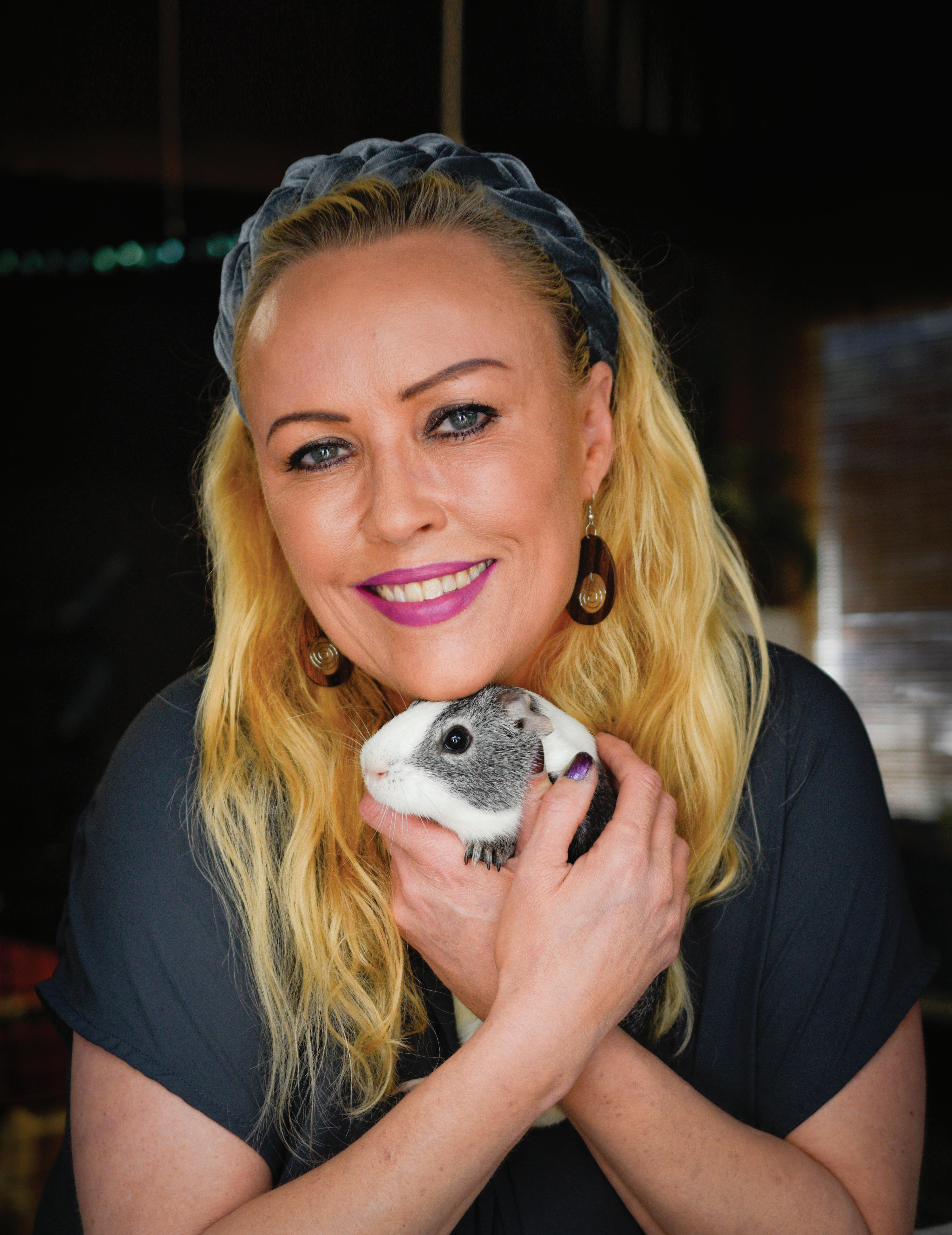

BULL Dogstrology Pierce Farm Guinea Pig Rescue Nonprofit is the largest of its kind in America Pacific Marine Mammal Center SPRING / SUMMER 2020
THE
Westman Editor-in-Chief

“Bentley and my other companions teach me how to enjoy each moment. I love animals from all walks of life. From furry to scaly, they all have a special place in my heart.”
 Villafane Managing Editor
Villafane Managing Editor
“I don’t have a pet, but I have a scorpion Beanie Baby because I’m a Scorpio. Maybe I’ll get a real one someday.”

“I couldn’t buy happiness, so I rescued it.”
THE STAFF WITH
Spring
“My dog came into my life when I lost my previous dog and I thought I would never emotionally recover. Every morning my dog waits by my door for me to wake up, and I’m reminded how special he is. Dogs are the best companions.”



“I like dogs more than most humans. You give them some food and everything is A-OK.”

“Even though dogs only live with us a short while, the love they show us transcends a single lifetime.”
 Nathan George Writer
Chelsea
Hannah Davis Writer
Peter
Adam Baron Photographer Aimee Perez Writer
Ornemo Writer
Nathan George Writer
Chelsea
Hannah Davis Writer
Peter
Adam Baron Photographer Aimee Perez Writer
Ornemo Writer
“My dogs are my best friends. Every day with them is a new adventure and they never stop making me smile.”
Welbeck Design Editor
“I didn’t think that as a Christian, it would be possible to actually love God and hate one of his creations ... and then my husband got a cat.”
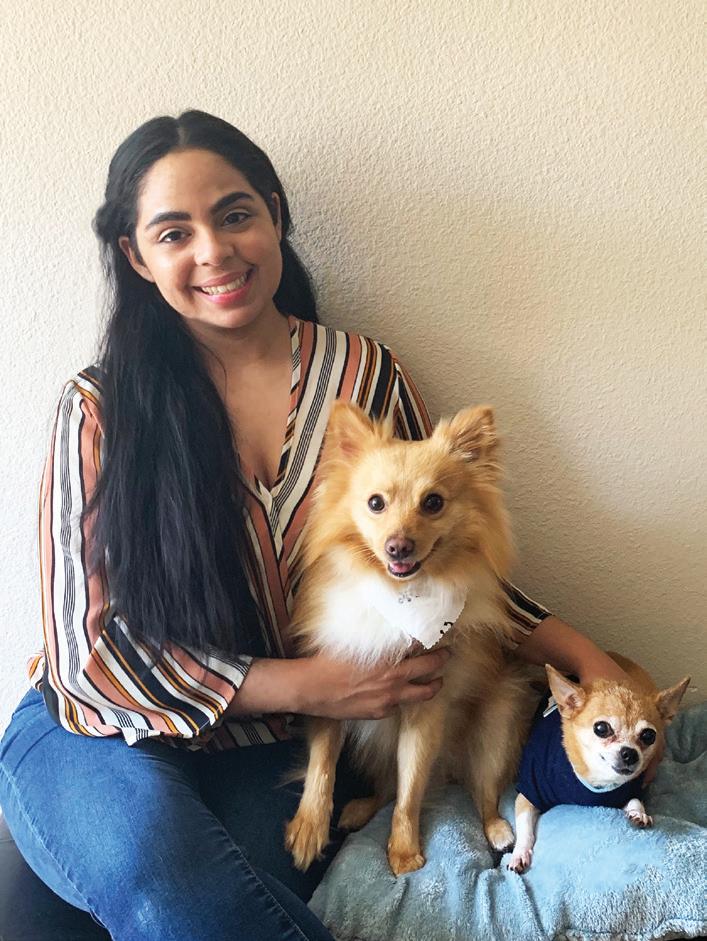
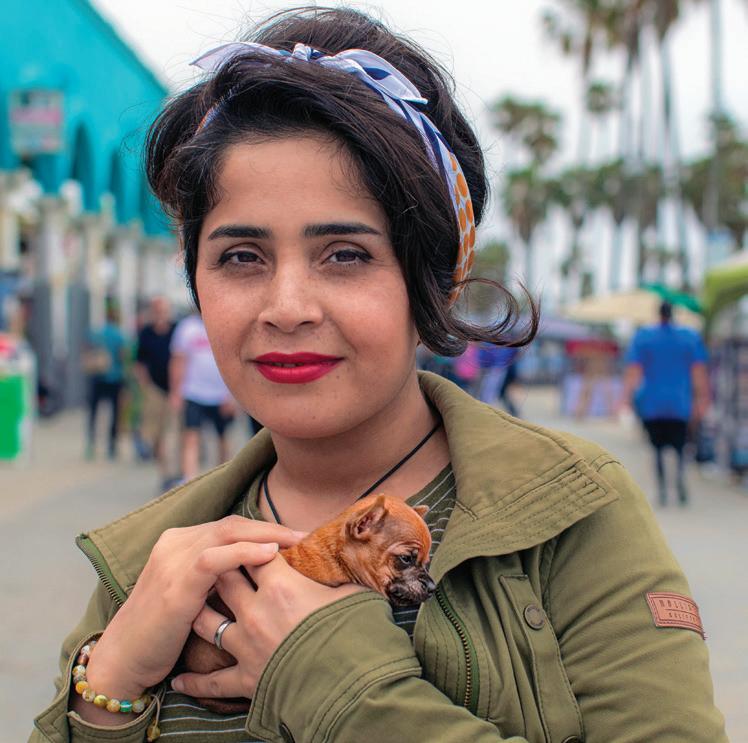
THEIR FURRY FRIENDS
“I don’t have pets. I love pets, but I can’t bear to see them waiting for me every day to take them for a walk. I don’t want to imprison them for my own desires. At this particular time, I don’t have much time for the little fur babies.” 2020


“I didn’t have a pet until I was 40 years old ... and then we got Priscilla. Every day, she teaches me to be present and shows me the power of unconditional love through the purrs.”
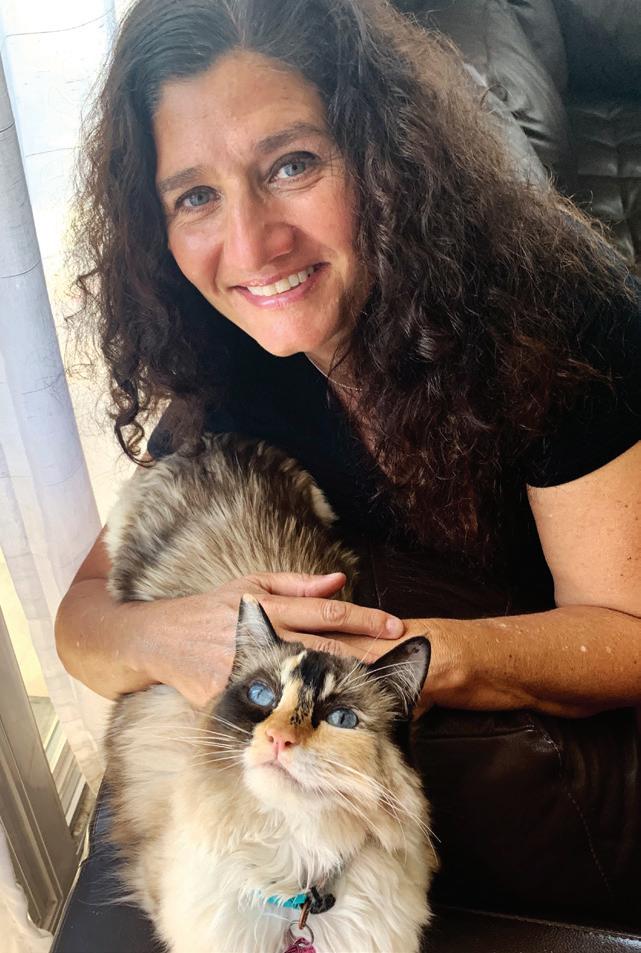

 Jeff Favre Adviser
Jeff Favre Adviser
“I am definitely a cat person. They are really friendly sometimes and aloof others, just like people. Somehow they have figured out how to get me to do what they want.”
Jill Connelly Adviser
Meilani
Atena Naghi Photographer
Giselle

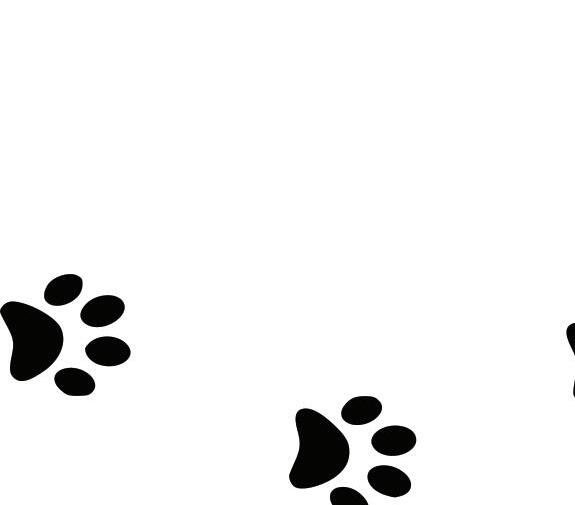
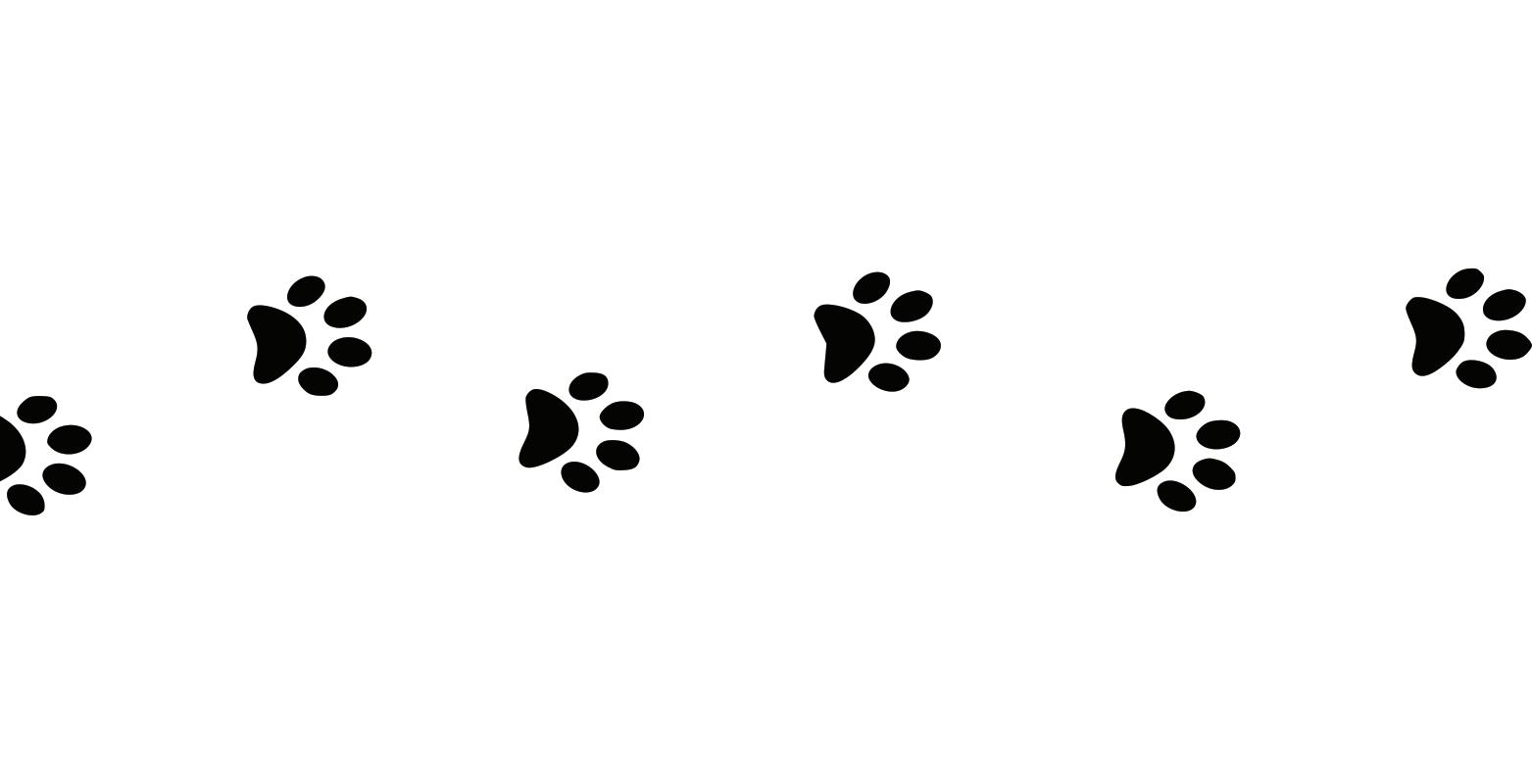

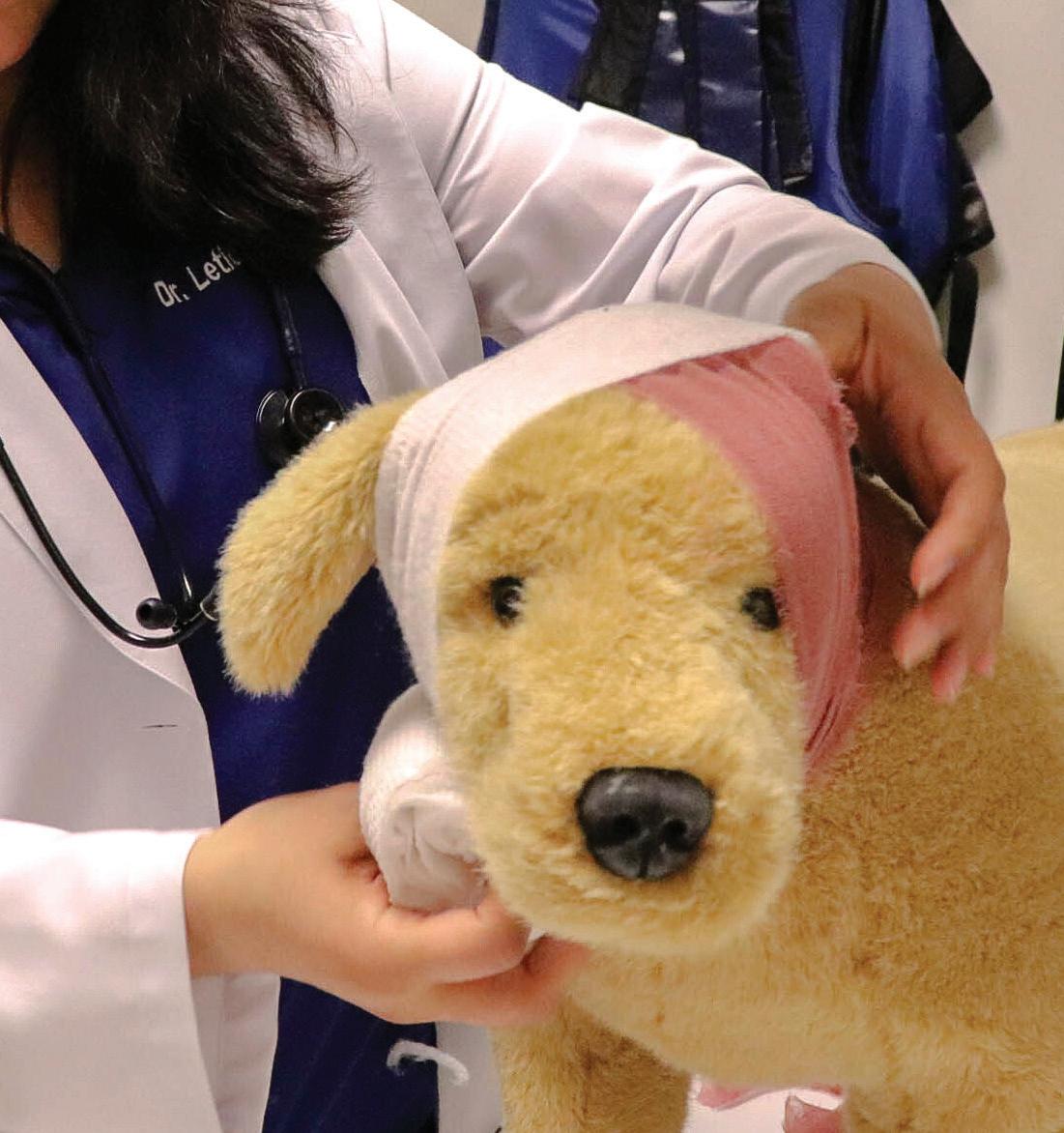



6 14 17 18 10 Pacific Marine Mammal Center Pierce Farm Vet Tech Program Vet Resources Los Angeles Guinea Pig Rescue Contents
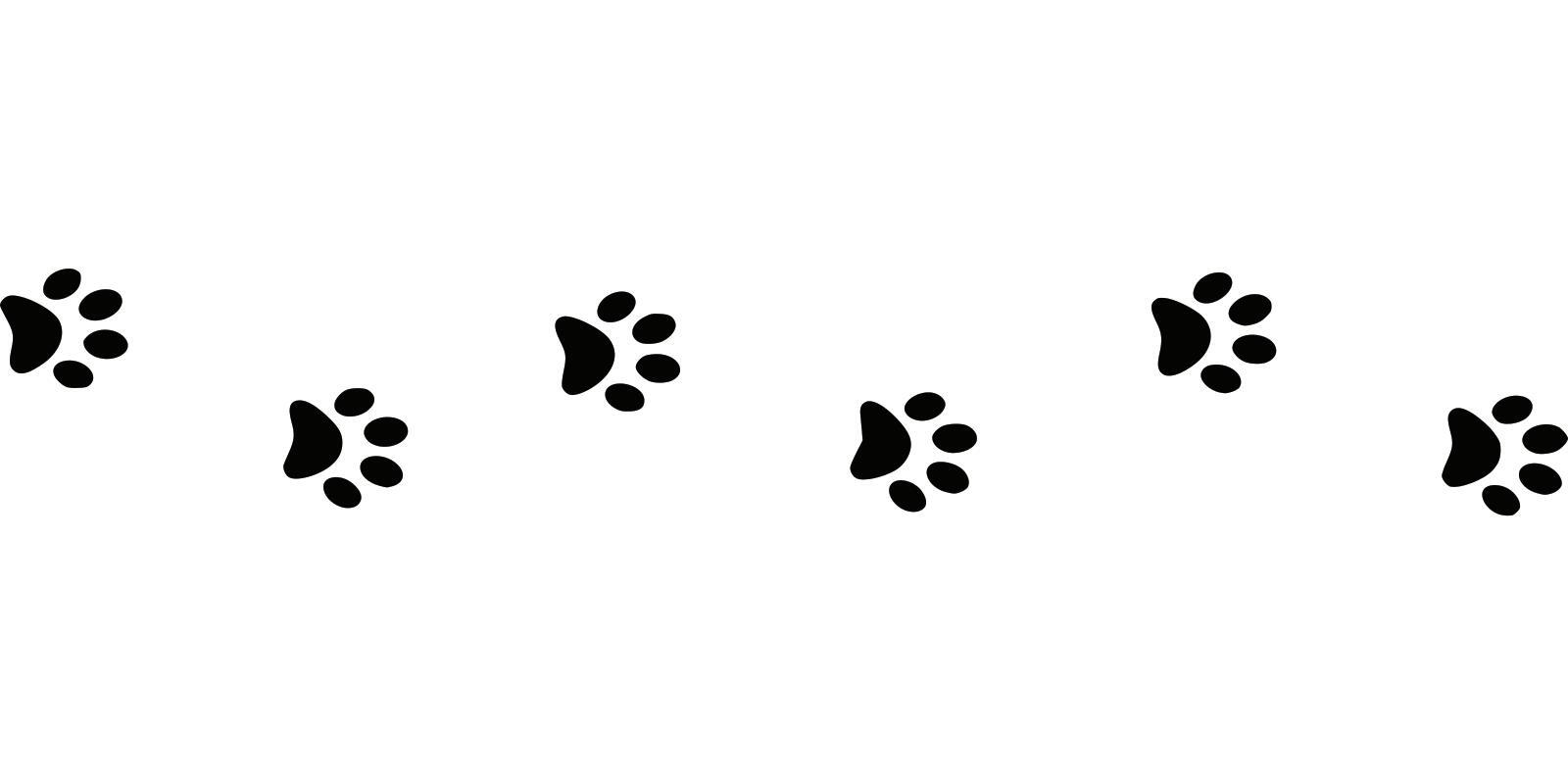


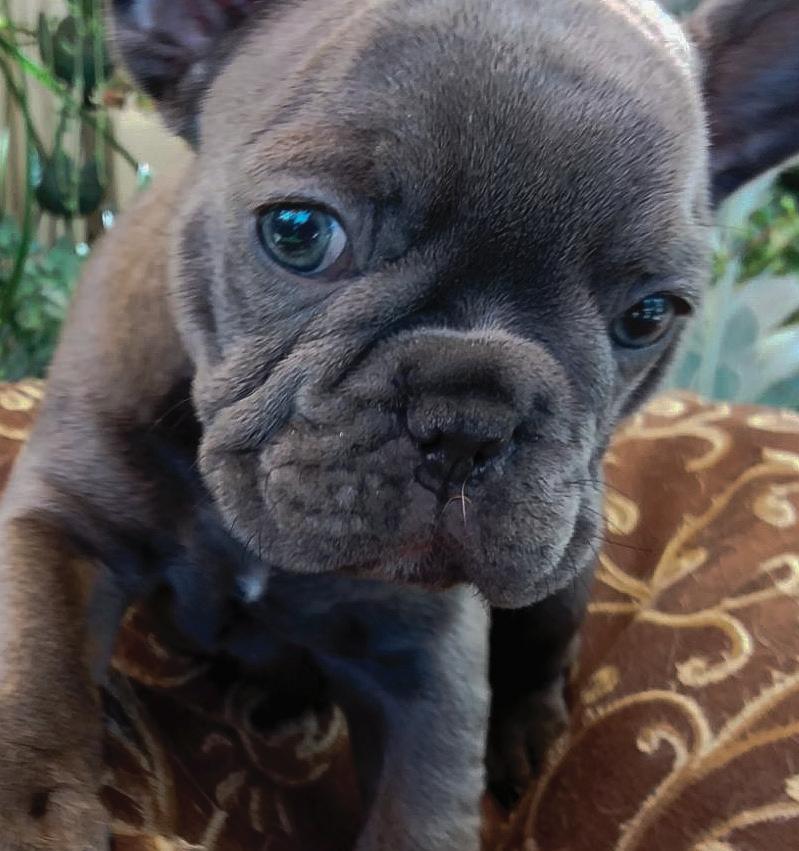



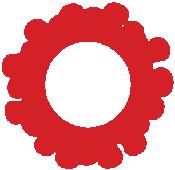


20 32 26 29 22 28 COVID-19 Safety Why We Love Our Pets Food Review Dog Walkers Dogstrology Farewell, Little Pine Homeless People with their Pets 25 Read full content online at thebullmag.com E D Q The Bull Magazine @thebullmag @thebullmagazine
Aman hoarded more than 1,000 guinea pigs.
About 80% were pregnant.
Saskia Chiesa, the founder and director of the Los Angeles Guinea Pig Rescue, saved these guinea pigs and housed them in two horse stables.
“He had good intentions, but we were called in to remove all of the females to help control the breeding,” Chiesa said. “The plan was to remove all of the female guinea pigs from the hoarder’s possession so that they won’t breed.”
Chiesa said she and her team of volunteers found homes for every one within a year and a half, but there were some repercussions in the process.
“It was very taxing on our community,” Chiesa said. “We couldn’t take in any new guinea pigs from our community and had to briefly stop providing many services due to the extreme influx of new guinea pigs.”
The Los Angeles Guinea Pig Rescue is the largest guinea pig welfare organization in America. It is located in Chatsworth on a large ranch.

Chiesa started the guinea pig rescue in 1999, shortly after she arrived in America from Holland. She said the rescue saves more than 2,000 guinea pigs every year. It is a no-kill private shelter that offers rescue, sanctuary and adoption services for guinea pigs.
Chiesa was inspired by Peter Gurney, the author of “The A to Z of Guinea Pig Care,” when she befriended him more than 20 years ago while living in London.
“I noticed this man sitting close to me and had a shopping basket on his lap,” Chiesa said. “When I looked closer, I noticed that there was a beautiful, well groomed Peruvian guinea pig in that basket. I asked him what on earth he was doing in the subway with a guinea pig in a basket. He told me that he had just returned from his weekly visit to the Great Ormond Children’s Hospital. When I moved to L. A. and started my guinea pig rescue, I relied on Peter for support and advice.”
According to www.miamiherald.com, “Male guinea pigs can reproduce at three weeks old, females at four weeks. Mothers can get pregnant one hour after giving birth.”
Story by: Meilani Welbeck
Photos by: Chelsea Westman
6 thebullmag.com
Saskia Chiesa poses with her four pet guinea pigs at the Los Angeles Guinea Pig Rescue in Chatsworth, Calif., on April 23, 2020.
Saskia Chiesa’s L.A.-based non-profit makes a big impact on small animals
Chiesa said that in situations where the hoarding and breeding gets out of control, her team is called. Chiesa believes that even though guinea pig hoarders do not have the best knowledge and accommodations, they are not terrible people.
“We have to remember that the only way to spread the word is through kindness and understanding,” Chiesa said.

The Los Angeles Guinea Pig Rescue offers free health checkups, bubble baths, boarding and grooming services for their clients.
Chiesa runs a Youtube channel with more than 65,000 subscribers and 9 million video views. Her videos provide information on proper guinea pig care, guinea pig updates, information, tips and guinea pig maltreatment awareness.
Carla Carli, one of Chiesa’s Youtube subscribers from the Philippines, said she learned valuable information from Chiesa’s videos.
“I believe I’m a better owner now and
understand my pet while knowing a lot about their needs and behavior,” Carli said.
“Saskia is a very compassionate and driven animal-loving entrepreneur,” said Ursula Cormier, a devoted Los Angeles Guinea Pig Rescue volunteer, who has been volunteering for two years. “The approach she takes with everyone who comes by the rescue is simply put as kindness and no judgment. This is Saskia’s philosophy for running the rescue and I love her for that.”
Chiesa said she fights to inform the public about the truth behind pet stores and how they treat and sell their guinea pigs.
When you enter the Los Angeles Guinea Pig Rescue shelter, there is a sign that invites guests to share their testimony from purchasing guinea pigs from other pet stores chains. Chiesa is currently collecting tons of stories from guinea pig owners who purchased their pets, only to see that they are riddled with ringworm and upper respiratory infections.
“Who else is going to advocate for these little guys?” Chiesa said. “They don’t have anyone else to speak up for them and fight for them.”
Chiesa believes that by buying a guinea pig from a chain store, you aren’t actually rescuing them.
“Adopt from a local rescue whenever possible and do not contribute to the misery these guinea pig mills inflict,” Chiesa said.
Chiesa said that these large corporations and chain pet stores recklessly gives false information to the public when it comes to proper guinea pig care as well as properly identifying the proper genders of the guinea pigs.
“It happens all the time,” Chiesa said. “The pet store will assure their customer that they purchased two of the same sex guinea pigs, only for us to get a phone call and have to rescue families of guinea pigs.”
She explained that if you don’t separate a male from a female guinea pig, even within Animals
7
just one hour after the female gives birth, she goes into heat and can get pregnant again. This is how the hoarding and breeding can get out of control quickly.
Chiesa said that they also get calls from people asking them to take in guinea pigs that have been left in the street or in a dumpster.
“There’s only a few of us advocating for guinea pigs out here,” Chiesa said.
Chiesa also advocates against miseducated veterinarians who misdiagnose guinea pigs due to lack of experience and education for guinea pigs.
“I would suggest finding an exotic/pocket pet only hospital or a vet within a small animal facility that focuses mostly on pocket pet medicine, that way they are up to date on all the newest medicine for them and they practice it day in day out,” said veterinary technician Alyssa Marie of the Wellington Animal Hospital in Woodstock, Canada. “Sometimes pocket pets are better left to the specialty clinics that only care for them, as opposed to the small animal vets who don’t see them as often.”
The Los Angeles Guinea Pig rescue is open during the COVID-19 quarantine. Chiesa is

Los Angeles Guinea Pig Rescue
Those trying to adopt a guinea pig are advised to fill out an adoption application and pick up their guinea pig at the gate only.
Chiesa said she thinks the work she and her team do at the rescue is worth the toil.
“It’s no easy job taking care of so many guinea pigs and providing such thorough, loving care,” Chiesa said. “We make money off of our Youtube channel which helps a lot, but we are always in need of supplies, bedding and food. We are all volunteerbased.”
However, the quarantine has also limited the rescue center to fewer volunteers as well.
“Normally we have volunteers, but with everyone staying at home, I’ve had to do a lot of the work around here myself,” Chiesa said.
taking precautionary measures to keep the rescue safe and clean.
They are not doing health checks or bath appointments until further notice and are restricting access to their facility, including visitor tours of the ranch.
Guinea pigs are very friendly creatures and according to www.humansociety.org, “Guinea pigs are social animals who do best with the companionship of another pig,” so if you’re spending quarantine alone and are looking for a pet to keep you company, maybe consider adopting a guinea pig, or two.
8 thebullmag.com
(Top) Saskia Chiesa helps treat wounds on a rescued guinea pig at the Los Angeles Guinea Pig Rescue in Chatsworth, Calif.
(Right) Podrick sits in his hide. Podrick is a black and white guinea pig that lives with four other males. He is one of Saskia’s guinea pigs and is sheltered with the other rescues at the Los Angeles Guinea Pig Rescue in Chatsworth, Calif.
(Left) Saskia Chiesa’s guinea pigs gather by a bowl of food to eat at the Los Angeles Guinea Pig Rescue in Chatsworth, Calif.
“Who else is going to advocate for these little guys? They don’t have anyone else to speak up for them and fight for them.”
- Saskia Chiesa Founder
c c
 Podrick the guinea pig is one of Chiesa’s ambassadors at the Los Angeles Guinea Pig Rescue in Chatsworth, Calif.
Podrick the guinea pig is one of Chiesa’s ambassadors at the Los Angeles Guinea Pig Rescue in Chatsworth, Calif.
The slapping of flippers and loud barking echoed throughout the barn of a small rehabilitation center in Laguna. Fish formula mixed with electrolytes is prepared and poured through a feeding tube to reach a malnourished baby elephant seal’s mouth.
A volunteer works with Wendy Leeds, the animal care coordinator, to keep the large animal pinned to the floor so its nutrients can safely be administered. They decided to name the 68-pound elephant seal Freddy, as her rescue date was Friday, March 13.
“They’re scared,” Leeds said. “They have no idea what we’re doing. We’re not hurting them in the sense of when we’re taking them down, but they’re going to struggle so we respect that force.”
Leeds works with a small staff at the Pacific Marine Mammal Center (PMMC). Since 1971, they have worked to rescue and release injured marine mammals like
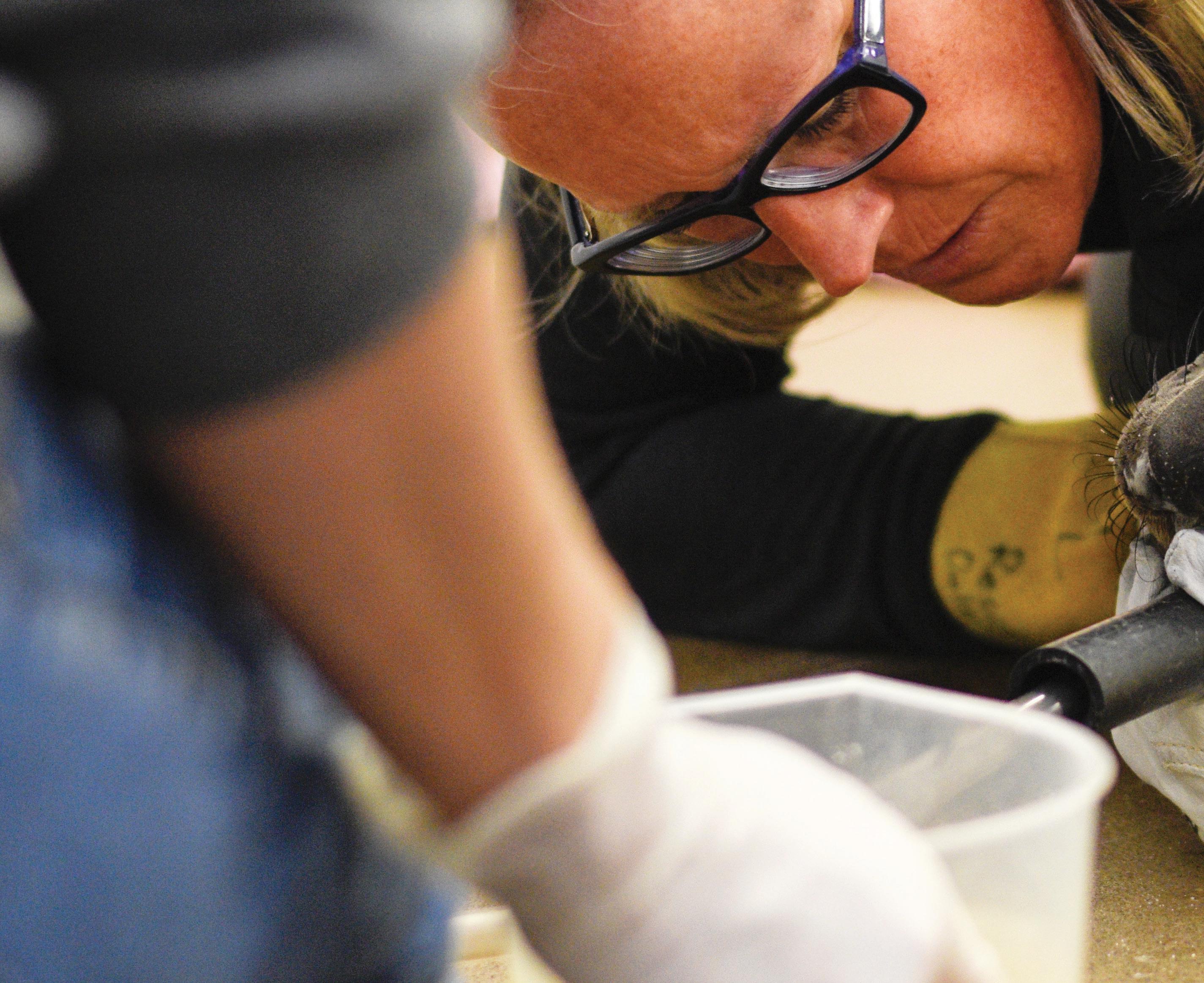
Leeds said they use a technique where they are not squishing the animals and can do the procedure as fast as possible with minimal stress. She said it is like visiting the doctor and needing to get a blood test — it is necessary for good health but will be uncomfortable for a few minutes.
Freddy was found and rescued from 1,000 Steps Beach, where she has had an up and down journey to recovery.
“We were keeping an eye on her because she had lost weight, and then later that afternoon she was shaking,” Leeds said. “Her whole body was trembling. Her temp was 93.5 [degrees Fahrenheit], very low. We moved her into one of our ICU units with the warm floors and had placed a warm blanket that we call a body hugger. It’s a lovely medical device.”
While monitoring Freddy’s body
temperature, they noticed it kept fluctuating. So they agreed to put her on antibiotics and added thickness to the tube feeding to give some more weight to her diet.
“We were vigilant,” Leeds said. “By March 29, she had gained eight pounds. We had her on close watch until April 19. We had taken more blood and her blood looked like it was back to normal and things were doing really well.”
Freddy is now over 213 pounds and is scheduled to be released in late May.
“She’s now eating all her meals, and she’s actually even diving,” Leeds said. “She’s definitely one of those animals that highlight how closely we monitor our animals.”
After being tube fed their formula, the seals are then weaned onto a fish diet where they can eventually be stable enough to return back into the wild.
She stated that this is currently the busy
10 thebullmag.com
Freddy throughout San Onofre to Seal Beach.
Rescue, Rehabilitate, Release
season for California sea lions and the elephant seal season barely started this month.
“Typically, we see about 25 to 30 elephant seals a year,” Leeds said. “However, we’re thinking it could be a big year. We’ve had up to 76 elephant seals in-house, and those are big babies.”
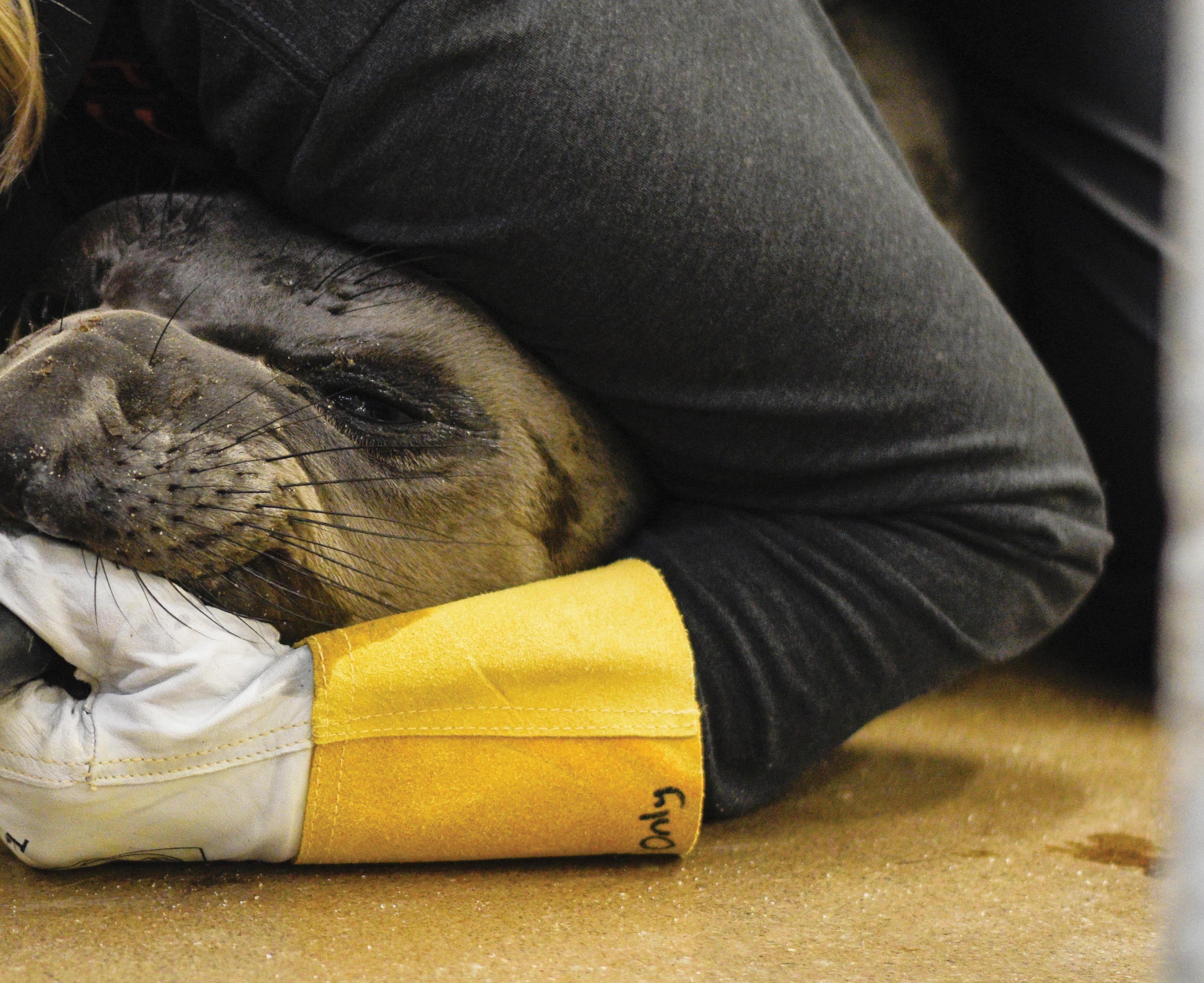
Leeds has been working at PMMC for 24 years. She said there are many different aspects of animal care for volunteers and it’s a lot of hands-on training when she prepares them for rescues.
“Typically, cleaning is the number one thing, weighing fish and then we gradually start bringing them in to get them comfortable,” Leeds said. “I try to tell volunteers that I train, ‘I’m never going to put you in a situation that I don’t feel you can’t handle.’ I want them to trust me because at the end of the day, we’re all working together and these are wild
animals.”
Leeds said these rescues not only require team communication, but making the right decisions under pressure.
“If we’re doing a jetty rescue, which is usually we’re going out on a harbor patrol boat, they bow us onto the rocks, and we jump from the boat to the rocks,” Leeds said. “Then you’ve got to net the animal and get the animal from the rocks back onto the boat. For a volunteer who’s never done that, myself as the Animal Care Coordinator would go out and train them on how to do that.”
PMMC has rescued more than 40 animals in 2020 as of May and that number increases when they are in their “busy season” or a breeding season where many sea lions are likely to mate and be found stranded. They are a nonprofit in Orange County with a small staff of 16 and at least 220 volunteers coming in during different shifts.
PMMC educates more than 10,000 children a year in a variety of their education programs, such as distance learning and girl scout and boy scout programs. Normally, they see about 50,000 guests a year in their visitor yard.
Public Relations and Events Coordinator Krysta Higuchi got involved with PMMC 10 years ago and manages the social media account, attends rescues and assists with animal care when needed. She also has been involved in many exciting and unusual rescues.
“There was an animal that was completely entangled in a gill net and stuck to a buoy,” Higuchi said. “So I jumped on the buoy. My teammate jumped on with me. I held the animal, she cut the gill net off, my third teammate held the net up and boom. You’ve really got to not only trust your teammates, but have those skills and confidence to know what you’re doing.”
Animals
11
Wendy Leeds holds down Freddy, a baby elephant seal rescued at the Pacific Marine Mammal Center in Laguna, Calif., on March 13, 2020. The rescued patients go through a process of tube feeding when malnourished. This method does not hurt the animals and is needed so they can eventually be weaned to a fish diet.
Story and photos by: Chelsea Westman
Volunteer and community-based organization brings care to injured marine mammals
Higuchi said when she started rescue coordinating in 2015, they entered what is called an Unusual Mortality Event (UME).
“A lot of seals and sea lions, thousands of them, sea lions in particular washing up emaciated, starving, dying and we needed extra help coordinating and organizing all of these rescues,” Higuchi said. “I became a rescue coordinator part-time. Once I finished school, they hired me full-time.”
Retired research biologist Mark Lowry has worked for 36 years studying sea lions in Southern California. He received a Bachelor of Arts in biology from Humboldt State University in 1973.
He has worked with gathering specimens from San
Clemente Island and San Nicolas Island to monitor California sea lion diets and has studied the census of the sea lion population in the Channel Islands.
When he started working in 1976, the US population was about 60,000 and it has grown to about 300,000. Then that reached what he calls carrying capacity and has been gradually decreasing since.
He said the population is currently in good condition, yet a change in sea lion diets has contributed to the UME seen along the California coastlines.

“There
were a lot of strandings, mainly pups, because they got the mothers abandoning them,” Lowry said. “Some of the pups went out to sea and some of them were strong enough to make it to the mainland. A lot of them died.”
After observing the UME, he said strandings weren’t the only reason for the high number of deaths.

“There are also other things that happened to them,” Lowry said. “You’ve got leptospirosis infections and there’s the algal blooms too that affects them.”
Animal Care Supervisor Lindsey ShaVoic has worked at PMMC for 20 years. She volunteered for 13 years and first heard about the organization when she was a Girl Scout.
ShaVoic said there are different roles involved when it comes to being an animal care supervisor.
“As a supervisor, you’re making decisions on the animal’s care,” ShaVoic said. “Those decisions can hurt an animal or help an animal and the same with your team. I’m responsible for my volunteers’ safety, so it’s
12 thebullmag.com
Frozen fish are stored in bulk at the Pacific Marine Mammal Center in Laguna, Calif.
A California sea lion waits for fish at the Pacific Marine Mammal Center in Laguna, Calif.
my decision who I send out on a rescue and all of that and put it together. Everything has some sort of risk because these are wild animals. There’s some sort of responsibility to keep them safe. Managing volunteers is a lot different than working beside them.”
She said one of her favorite aspects about working at the center is how many different people get involved with their programs and volunteering.
“They work their butts off, and it’s such a privilege to work with amazing people like that,” ShaVoic said. “We get people from all different walks of life. They don’t necessarily have a bio degree, but we all have helping animals in common, and I think it’s really neat that we can get people that want to experience and then people that just want a hobby.”
Due to the COVID-19 pandemic, PMMC has stayed closed to the public, but they are still working to rescue as many animals as they can with the donations they receive to

keep their facility clean.
The center is offering free distance learning programs on their website that inform people about marine mammals from their home and people can visit pacificmmc.org/free-program to sign up.
They also have a live webcam of their patients so people are able to watch them playing in the rehabilitation pools from home.
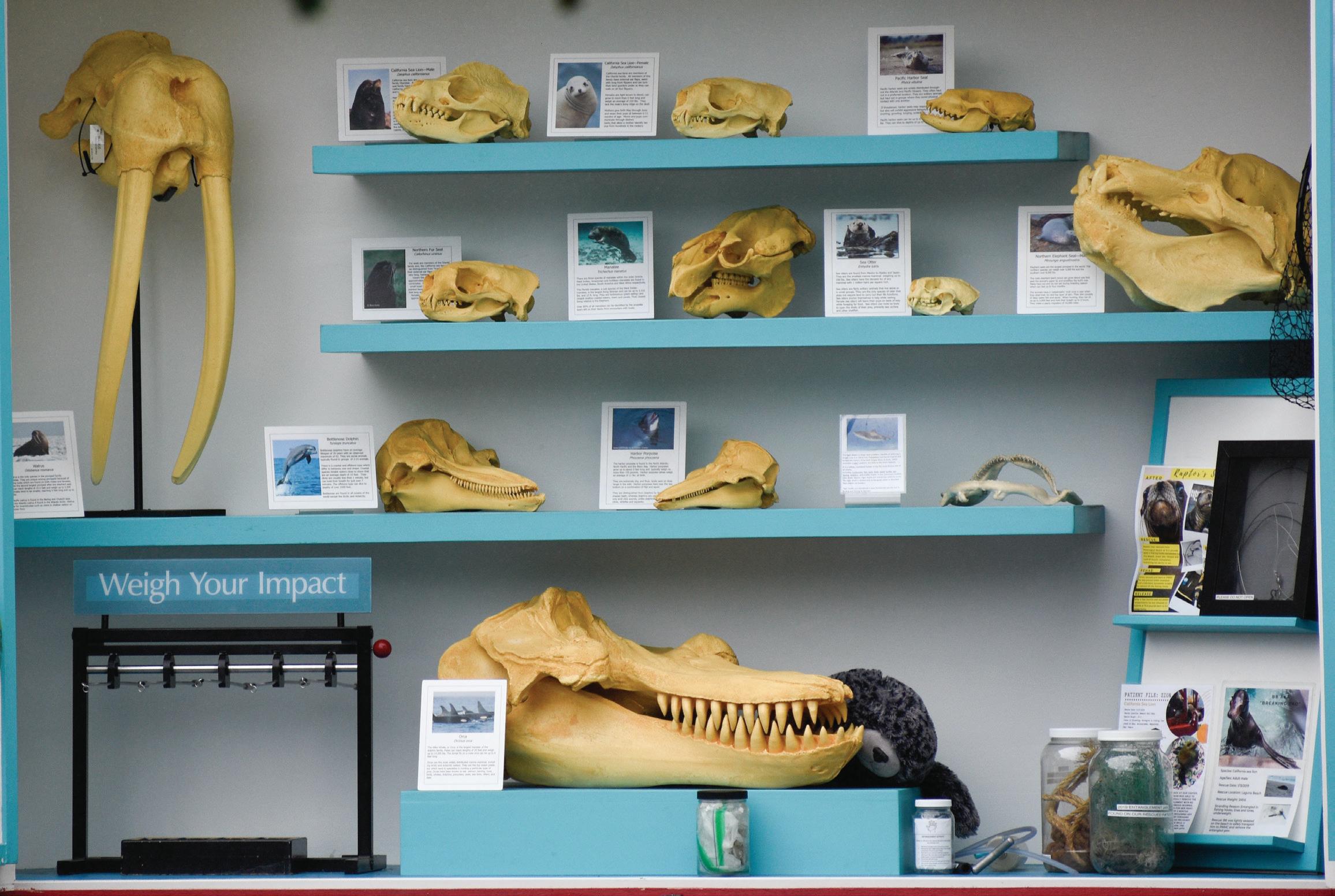
Leeds said when they release the animals back into the ocean, the team shares in the joy of the successful recovery.
“By spreading awareness of what it is we do here, and the impact we’re having on these animals and how we need to fix the environment that they’re living in, that’s what keeps me going,” Leeds said. “It’s what keeps me coming in here and doing all of this for these guys.”
Animals 13
Illustration by: Ashley Shellmire
Various bones of marine mammals are on display in the Treasure Trove at the Pacific Marine Mammal Center in Laguna, Calif.
Savinghelpinganimals,families
Veterinary technician program helps create passionate professionals
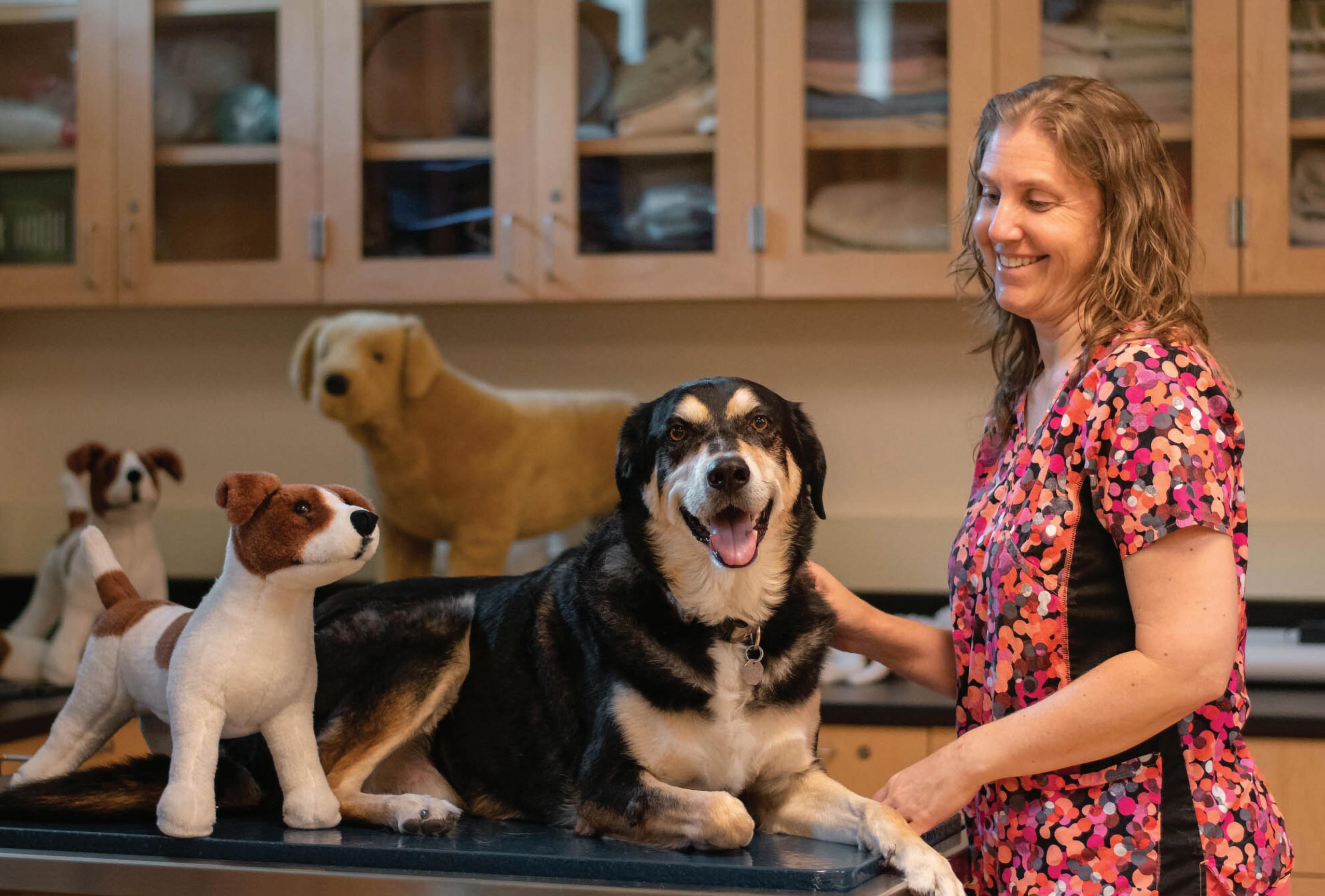
Abottle filled with a month’s worth of pills, empty.
A dog, unconscious.
An owner, devastated.
The female boxer was taken to a veterinarian’s office after she swallowed a bottle of her separation anxiety medication. She had to be anesthetized to control her constant seizures. Despite being put on an IV for days, she still had tremors.
The tremors eventually slowed down, and
she was able to fully recover.
That dog was saved in part because of registered veterinary technician (RVT) Angela Killips.
Killips said, however, cases don’t always work out this way.
“The compassion, it wears you down,” Killips said. “You put everything you have into this patient and sometimes medicine doesn’t work or the body doesn’t respond to medicine. You’ve done everything you
can for that patient and that patient may not make it. We bonded to those patients. They become our family. That’s very hard on the heart.”
Killips said what most people misunderstand about the job is the broad scope of being a veterinary technician. RVTs take x-rays, draw blood, operate machines and work with patients.
“I’m always surprised at the fact that people don’t understand how much nursing
14 thebullmag.com
Angela Killips, an assistant veterinary technician, poses with her dog Lucas in the Vet Tech building at Pierce College in Woodland Hills, Calif., on Sept. 26, 2019. Lucas has been given the title of program assistant by fellow vet tech students and faculty. Photo by: Katya Castillo
Story by: Peter Villafane
skills are in veterinary technicians,” Killips said. “We’re the ones that are giving all the TLC. I have nurse friends on the human side, and they still don’t understand that I’m also in that same realm.”
When community college students in the Los Angeles area aspire to be RVTs, Pierce College is one of their top options.
Pierce, which boasts 200 acres of land devoted to teaching agriculture, has the only RVT program in all of the Los Angeles Community College District.
Dr. Jennifer Adelini is the head of the RVT program at Pierce. She said what she enjoys most about teaching veterinary technician classes is when students make connections with the material and their reallife experiences.

“They’re very passionate,” Adelini said. “They’re very excited about all the topics that we talk about. And it’s nice because I think it’s
exciting, too. So when you have other people to share that with, it’s kind of similar to when you tell a joke and everybody laughs.”
Adelini said she previously taught a human anatomy class at College of the Canyons but wasn’t passionate about it because she wasn’t teaching about her favorite topic animals.
“I like their kind of simple approach to life,” Adelini said. “And that they’re not judgmental. Their love for us is unconditional. You can always count on them to make you feel better at the end of the day.”
In addition to the physical aspects of the job that people cannot handle, Adelini said the job also takes an emotional toll.
“There’s a lot of blood and other things that people sometimes can’t stomach,” Adelini said. “And there’s a lot of emotional aspects that we have to deal with. And I think dealing with the people sometimes is even harder.”
Killips said the best part about working
with animals is seeing her patients after a successful treatment.
“You can have that scared cat,” Killips said. “And with your handling skills and your body movement reading, and reading their behavior, you can change the way that they’re perceiving a scary situation.”
The process of being in the RVT program at Pierce starts with taking general education and entry level courses, moving onto the advanced level and finally with taking veterinary technician classes with live animals. From there, students receive an associate’s degree in veterinary technology and are qualified for the Veterinary Technician National Exam.
The program has about 30 graduates every year and has a passage rate of more than 80%. The national rate has been around 67% over the past three years, according to Adelini.
Adelini said that after the program,
Animals 15
Former Pierce student Dr. Leticia Gonzalez-Garcia visits Oliver the pig in the Center for Sciences at Pierce College in Woodland Hills, Calif., on March 6, 2020. Photo by: Ashley Shellmire
students usually work in small animal private practice.

“I hope that students keep that quest for knowledge, and that it leads them into interesting and exciting places in their career and that they feel accomplished and they love what they do,” Adelini said.
Dr. Leticia Gonzalez-Garcia is an alumnus of Pierce’s RVT program who returned and teaches animal science at Pierce. Gonzalez said being in the RVT program is like having a second family.
“It was really a great team,” Gonzalez said. “So when I had been a student, I said, ‘I’m going to come back and I’m going to give back.’”
Gonzalez said Pierce’s campus is what makes the RVT program unique.
“The fact that we do have animals on campus is really what sets it apart,” Gonzalez said. “We have a nice facility that mimics that of a hospital, which a lot of programs don’t have. And then we also have the farm.”
Gonzalez said she wants students to know that the program opens them up to a variety
cof opportunities.
“For the field of veterinary medicine, emergency, anything like that, I want them to know that it’s not a narrow pathway, that the sky’s the limit for them,” Gonzalez said.
Adelini said that Pierce has a great reputation in the veterinary community and that clinics often contact Pierce looking to hire graduates.
“I think students feel confident when they come here that there’s an excellent chance that they’ll be able to get a good foundation for their career and be able to pass that exam and get their license,” Adelini said.
According to Adelini, the job of an RVT is not an easy one, but the reward of helping animals in need outweighs the challenges.
c“I think it really takes a lot of internal strength and resilience in a lot of cases to keep coming back and keep wanting to help those animals and keeping that focus and not letting the other parts bring you down,” Adelini said.
16 thebullmag.com
Former Pierce student Dr. Leticia Gonzalez-Garcia wraps the ear of a practice animal in the Center for Sciences at Pierce College in Woodland Hills, Calif., on March 6, 2020.
Photo by: Ashley Shellmire
“I have nurse friends on the human side, and they still don’t understand that I’m also in that same realm.”
- Angela Killips
Registered Veterinary Technician
Department Chair
Savanah St. Clair, MS, Plant Science
stclais@piercecollege.edu
(818) 710-4250
RVT Program Director
Jennifer Adelini, DVM AdelinJJ@piercecollege.edu
Vet Tech Resources
Low Cost Spay and Neuter Surgeries
The Registered Veterinary Technician (RVT) program typically performs four surgeries per week through the semester. The students are involved in the whole process from preparation surgical assistance and recovery of the patient.
Pets need to be friendly and between 6 months and 4 years old, cats of any weight, dogs weighing 10-60 pounds to qualify for services.
Vaccinations, microchip placement, heartworm and viral testing are also offered by the program. Veterinary technology instructional assistant Angela Killips, RVT, is available at killipsa@piercecollege.edu for any questions or to schedule your pet when the campus is open.
RVT Courses at Pierce College
Animal Care Experience
Field Work
Intro to Vet Tech
Principles of Animal Science
Animal Health & Disease Control
Anatomy and Physiology of Animals
Anatomy/Physiology of Animals Laboratory
BIO 3 Introduction to Biology Chemistry 51
Microbiology 20
Small Animal Nursing I Lecture and Lab
Small Animal Nursing II Lecture and Lab
Veterinary Radiography Lecture and Lab
Clinical Procedures I Lecture and Lab
Clinical Procedures II Lecture and Lab
Dentistry for Veterinary Technicians Lecture and Lab
Clinical Pathology Lecture and Lab
Large Animal Nursing Lecture and Lab
Lab Animal Care Lecture and Lab
Clinical Experience for Veterinary Technicians
Animals 17
Illustration by: Chelsea Westman
The Pierce College Farm has been open despite campus being closed because of COVID-19. The only people allowed on campus are essential workers, which includes the four full-time workers and five student workers on the farm. They care for 205 animals.


Agricultural technician Natalie Albizo said there were 596 students helping with the farm before the Safer at Home order.
“It’d be anywhere between four and eight students twice a day for two hours,” Albizo said. “They would come in and clean the waters, feed them and rake pens. Now that they’re not here, I do that myself with my student workers.”
Farm Manager Marcie Sakadjian said the farm animals have noticed the change in personnel.
“I think they missed the human interaction,” Sakadjian said. “Our animals are used to a bunch of students here. They like people because they know that people equals food, generally. So, they like being around people.”
18 thebullmag.com
(Top) Part of the farm at Pierce College is emptier than usual during the COVID-19 pandemic. The school is closed and the only people allowed at the farm are animal caretakers. Photo by: Adam Baron
(Bottom left) Julio Wong smiles as he feeds the goats at the Pierce College Farm in Woodland Hills, Calif., on April 23, 2020. Photo by: Chelsea Westman
Ranch Blessing



 (Middle right) A newborn goat nurses from its mother at the Pierce College Farm.
Photo by: Chelsea Westman
(Bottom) Goats roam the fields of Pierce College. Photo by: Adam Baron
Copy by: Adam Baron
(Middle left) Natalie Albizo stands with Natalamb, the sheep she watches, at the Sheep Unit at Pierce College. Photo by: Adam Baron
Farm stays open despite campus closure
(Middle right) A newborn goat nurses from its mother at the Pierce College Farm.
Photo by: Chelsea Westman
(Bottom) Goats roam the fields of Pierce College. Photo by: Adam Baron
Copy by: Adam Baron
(Middle left) Natalie Albizo stands with Natalamb, the sheep she watches, at the Sheep Unit at Pierce College. Photo by: Adam Baron
Farm stays open despite campus closure
without a home, but
NOT
ALONE
Copy and photos by: Atena Naghi

When people and pets are both homeless, bonds are forged
(Left) Ronald Johnson holds his snake in Venice, Calif.
(Top right) Charlie Psy plays the guitar in Venice, Calif.
(Bottom left) Charlie Psy holds his dog Halu in Venice, Calif.
(Bottom right) Charlie Psy’s dog Halu is by his side in Venice, Calif.
Halu was born on the streets of South Central Los Angeles, similar to many dogs who are the product of mating strays. She is called an “urban feral,” a wild inner-city dog.

Her owner, Charlie Psy, said Halu was alone from the age of about three months. Psy wasn’t looking to get a dog because he was homeless and living in a tent.

But since Halu was small enough to fit in a bicycle basket, Psy thought that maybe it could work out for the best.
Now, a year and a half later, Psy is no longer homeless and believes meeting Halu was the best thing to happen to them both.
“She will be my companion for life and I will be her companion for life,” Psy said.
Ronald Johnson is a homeless
man who wanders Venice with his burmese pythons. His snakes are always with him everywhere he goes.
Operation Blankets of Love
16911 San Fernando Mission PMB #187 Granada Hills, CA 91344 (818) 402-6586
www.obol.info
According to the Los Angeles Homeless Services Authority, in 2019, approximately 50,000 to 60,000 people may be found homeless on any given night in Los Angeles County with more than 44,000 of them on the streets. Animals

21
Resource for homeless people with pets:
Why Do We Love Our Pets So Much?
Behind the pyschological effects animal companions have on their owners
When we look into the eyes of our pet, we tend to see a little version of ourselves.
At 17, Nathalee Montano moved from the San Fernando Valley to Santa Barbara to study zoology. Settling into her new life, Montano found a job at a dog boarding facility called Camp Canine.
One thing was missing in her new life away from home—her fluffy, faithful golden retriever named Molly.
“When I moved away to Santa Barbara, I was really depressed,” Montano wrote. “I still hadn’t made new friends and was alone at 17 years old living life for the first time without my animals.”
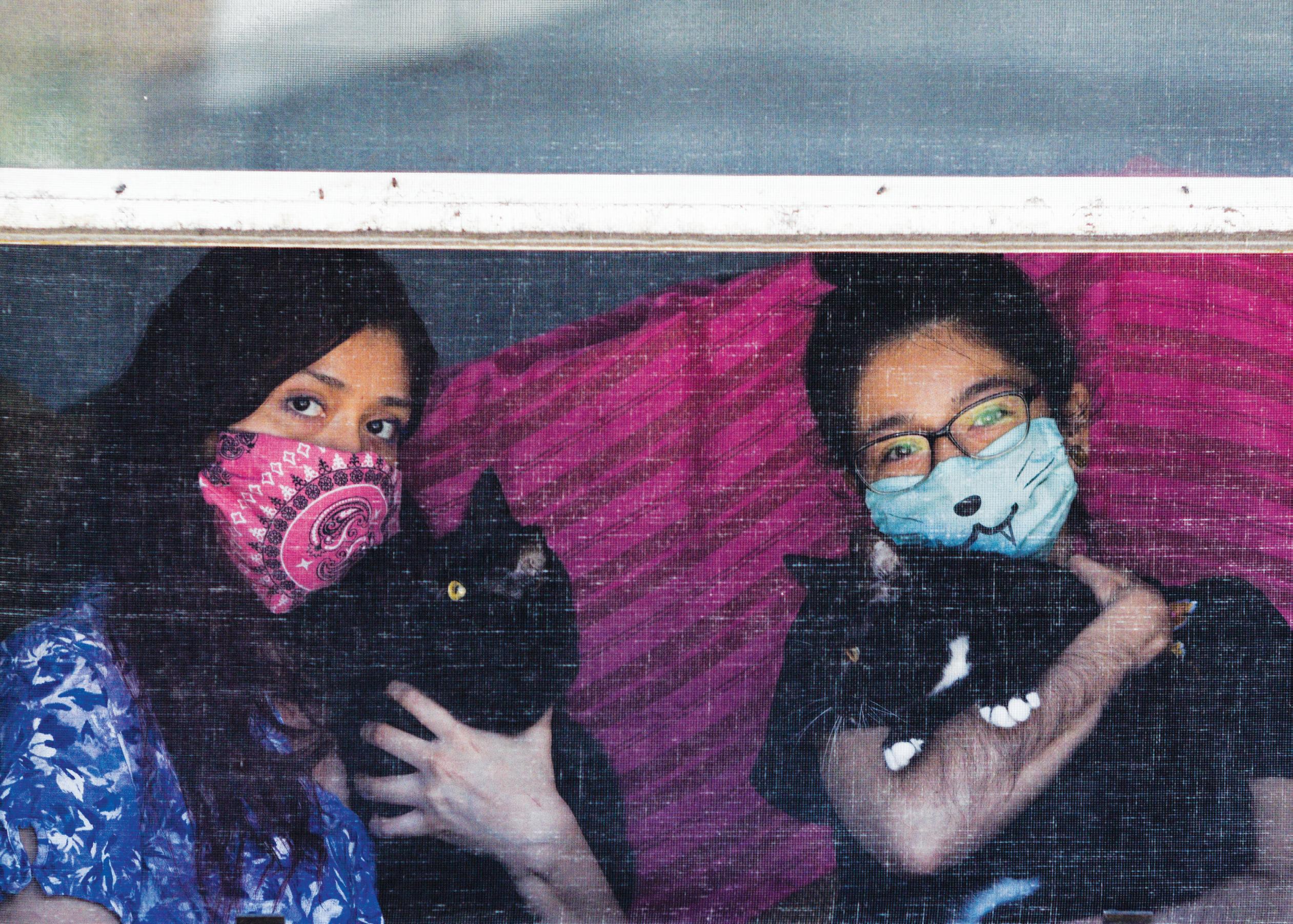
Montano said in an Instagram direct message interview that while other people were busy partying and going out, that didn’t matter to her. All she wanted was her pup.
“I begged my landlord and my mom to bring Molly to Santa Barbara with me, and by the grace of God, they said yes,” Montano wrote. “We would run and jog about two-tothree miles out of the house in the beautiful hills of Santa Barbara and then would have
to find our way back. She was my roll dog, my adventure buddy, my right-hand gal.”
A study published by the American Psychological Association found that pets can serve an essential role in social and emotional support for people. Also, pet owners feel the same type of closeness with their pets as they do with their friends.
The study reported that people with pets are more outgoing and feel less isolated.
Montano’s mother got Molly for her two years after her father died when Montano was 11. Molly died at 13 on Feb. 26, 2020, of cervical cancer.
“Honestly, I don’t know what I would’ve done without that dog by my side,” Montano wrote. “There was only so much we could do, but we had to humanely euthanize her. It was the right thing to do. She was suffering, and it wouldn’t be right to put her through extensive treatment.”
Bioethicist and writer Jessica Pierce said in a Zoom interview that the loss of a beloved pet companion is harder than the loss of a family member.
“I think that with animals, the emotional
attachments that we have are without complexity,” Pierce said. “I think our feelings of affection and attachment are unique. I don’t want to say stronger because they’re not, but they are unique.”
Pierce said that there is something genuine and absolute about the love that our pets give us. Even with their last moments on earth, they trust us completely.
“I don’t love the phrase unconditional love, but that’s what it is,” Pierce said. “It’s cliché, but what we get from our animals is that they don’t demand much from us. They do ask for reciprocity, and there’s something pure about the sharing of that love.”
Pierce stated that for humans, the reason there’s a biological response to why we love our pets is because of the caregiving instincts. The impulses we have toward our children get activated in particular with domesticated animals as well.
“One of the features of domesticated animals like dogs and cats is that they have what scientists would call pay dimorphic features or another word for it is an infantile schema,” Pierce said. “They actually look
22 thebullmag.com
(Left to Right) Patty Esmeral and Raisa Esmeral hold up their cats Toki and Pepper to their window at their home in Reseda Calif., on May 6, 2020.
Photo by: Chelsea Westman
Story by: Giselle Ormeno
like Mickey Mouse. They look like babies.”
Pierce explained that if you look at the shape of a dog’s face compared to their cousin, the wolf, the dog has more prominent ears and eyes with a slightly shorter nose. Those features activate the natural biological response to become caregivers.
For Claudia Miranda, a youth pastor at La Iglesia en el Camino, having a pet wasn’t something she had considered.
“I was not a pet lover,” Miranda said. “I always lived in an apartment, so it was never really an option first. Anytime any dog would even get near me or lick me, I would have to wash my hands.”
Miranda said in a Zoom interview that her younger siblings were the animal lovers growing up, and the closest things they had
c
for pets were a bird and a guinea pig. For her, having pets meant extra responsibility that she didn’t want.
However, that changed when her husband John Miranda, also a youth pastor at La Iglesia en el Camino, came home with a black-and- white husky named Mambo.
“The moment I met Mambo, it took me less than a day to feel love for him,” Claudia Miranda said. “First, he was a little defensive, but Mambo immediately just felt safe with me, and therefore I just wanted to protect him.”
John Miranda said in a Zoom interview that those first months with Mambo were challenging because Mambo was a crazy dog that had no sense of obedience.
 Molly the dog, photo courtesy of: Nathalee Montano
Molly the dog, photo courtesy of: Nathalee Montano
“I think in this country and in a lot of places, more and more people rely on companions, on animals as an emotional support system.”
-Jessica Pierce Bioethicist and Writer c
“So, I thought ‘I’m going to train him,’ and so far, we’ve built a bond between the two of us,” John Miranda said. “I’m very disciplined with dogs. I treat them like humans in a way where he has to know his limits. He knows that I’m a boundary zombie, and I’m the leader.”
Pierce said another reason why people love their pets so much has to do with society.
“We live in a pet obsessed culture,” Pierce said. “I think in this country and a lot of places, maybe more and more people really rely on companion animals as an emotional support system.”
Raisa Esmeral, a kinesiology major at Pierce College, stated in an email interview that she is someone who deals with a lot anxiety and restlessness. So, having her cats Pepper and Toki in her life is a critical component to her emotional well-being.

unfortunately, that affects my sleeping pattern and causes really bad insomnia,” Esmeral wrote. “But my cats being cats, stay up and keep me company. I found that it does help me with my mental and emotional health because my two kitty girls keep my mind from going to negative places.”
Esmeral wrote that even if she goes through a bad episode, Pepper and Toki never treat her differently or act scared. They stay with her, offering their silent or loud purrs as emotional support until Esmeral feels better.
“I am grateful that they haven’t treated me differently or lost interest in me,” Esmeral wrote. “They both were with me during some bad times in my life, and now that it’s over, I am glad I still have that love and relationship with them.”
Pierce explained that a lot more people live alone than ever before, and because of this, there is more loneliness.
“[There is] a greater need maybe for other ways to find the emotional connection,” Pierce said. “There are people who just don’t find it that easy to connect with people and, for whatever reason, find it easier with dogs or cats.”
Aleczandra Vick, a vet tech major at Pierce, said in a Zoom interview that when she moved out of her mother’s home, it was a hard thing to leave her cat Samwise behind.
“I had just recently moved, so I haven’t had my cat with me for a while, and I will admit it
was hard,” Vick said. “Especially given some other days, they’re very depressive. But, once I got her, I found those depressing days just went away.”
Vick explained that at moments when she feels down, having her cat is beneficial.

“It’s a distraction for me,” Vick said. “She snuggles up with me and demands my attention. It’s a huge help.”
Pierce stated that pets ease tension and anxiety, calming dark thoughts and remind us to be in the moment with them. Our pets distract us to the point that we forget about everything that worries us and can enjoy their presence.
“I believe they are a little Buddhist in the sense that they’re just like, ‘be here in the moment now,’” Pierce said. “Stop thinking about what’s going to happen tomorrow or what happened yesterday and let’s just be in the moment.”
Montano said that our pets are just a fraction in our lives, but to them, we are their entire world.
“No matter how far or ugly I felt, no matter how much I was hurting with everything going on, she didn’t care,” Montano wrote. “Molly was there for the ride, and she was there to make everything alright. There’s just something very special about the unconditional love that they have for us.”
24 thebullmag.com
(Left to right) Claudia Miranda and John Miranda hold their 6-year-old husky named Mambo at their home in Van Nuys, Calif. on May 9, 2020. Photo by: Adam Baron
(Below) Photo of Samwise the cat, courtesy of: Aleczandra Vick
Review: Sweetness Cake & Cafe
The stay at home orders from the city of Los Angeles and the state of California have made it challenging for people to dine in at their favorite cafes or restaurants.
There are still two ways for people to get their favorite treat from their neighborhood bakery, including Sweetness Cakes & Cafe—either using delivery services or pickup.
The delivery food service app GrubHub combined with the San Fernando cafe to create a sweet experience.
GrubHub’s app is similar to Postmates. It is user-friendly and easy to navigate and search for restaurants and cafes. Searching for Sweetness Cakes & Cafe is easy since the cafe’s entire menu pops up, ready for an order.
The cafe offers a four-pack of cupcakes with flavors such as Vanilla Birthday, Pink Velvet, Red Velvet and Oreo.

There’s also macarons with flavors including pistachio and lemon.
The order arrived in 20 minutes.
GrubHub has implemented a no-contact guideline where delivery drivers will leave the food at your doorstep then later inform you.
The family-owned cafe opened in 2014, offering custom cake creations, baked
goods, sandwiches and coffees.
The Daily Cupcakes are deliciously moist and tasted as if they are fresh out of the oven.
The Pink Velvet Cupcake is the prettiest, with pink frosting and dazzling little goldcolored chocolate puffs.
The Oreo cupcake has a mini Oreo on the top of the Oreo cream filling frosting. At the bottom of the cupcake, there is a regular-sized Oreo creating a fun new twist to a regular chocolate cupcake.
The Red Velvet cupcake’s cream cheese frosting isn’t too sweet or overpowering. It blends with the flavor of the cupcake, creating a delicious treat.
The Vanilla Birthday cupcake harkens back favorite childhood memories. The cake is butter confetti with vanilla buttercream topped with confetti sprinkles.
The Daily Cupcakes cost $3.25 each, but you can get a four-pack for $13, a six-pack for $18 or a dozen for $35.
As for the macarons, they are a little bit bigger than a quarter and go for $2 each. They are bite-sized treats that will satisfy your craving for something sweet and tasty.
The lemon-flavored macarons are not as tart as many lemon-flavored desserts, straddling the line between sweet and sour.
The Abuelita Latte is a surprise gem. It’s a twist on a famous Mexican drink, Chocolate Abuelita—turned into a latte. And drinking it as an adult brings back fond childhood memories. It goes for $4.50 for 12 oz. or $6.25 for 20 oz. if you want it iced.
It’s a bit expensive, but it’s a rare find and worth the splurge.
Delivery Hours
Animals 25
Story and Photo by: Giselle Ormeno
Mondays through Fridays from 7 a. m. to 7 p. m. and Saturdays from 9 a. m. to 6 p. m. They are closed on Sundays.
Cupcakes and macarons are just a few tasty treats that can be purchased at Sweetness Cake & Cafe in San Fernando, Calif.
128 N. Maclay Ave, San Fernando (818) 356-3826 Instagram: @sweetnesscc Information
the Stars
The Sun, the Moon, h a h a
and your Dog: Dogstrology
Dog astrologist says she can determine their personalities through their birthdays
It was another Wednesday afternoon in Los Angeles, and the sun was blazing down as if it was deep in the summer.
But It’s April 29 and in the middle of a pandemic, a dog is born.
He’s a Taurus. He will be loveable and stubborn. He will eat everything in sight and will never lift a paw to exercise. His mother isn’t aware of this yet, but self-taught Dog Astrologist Yesenia Flores said she already knows.
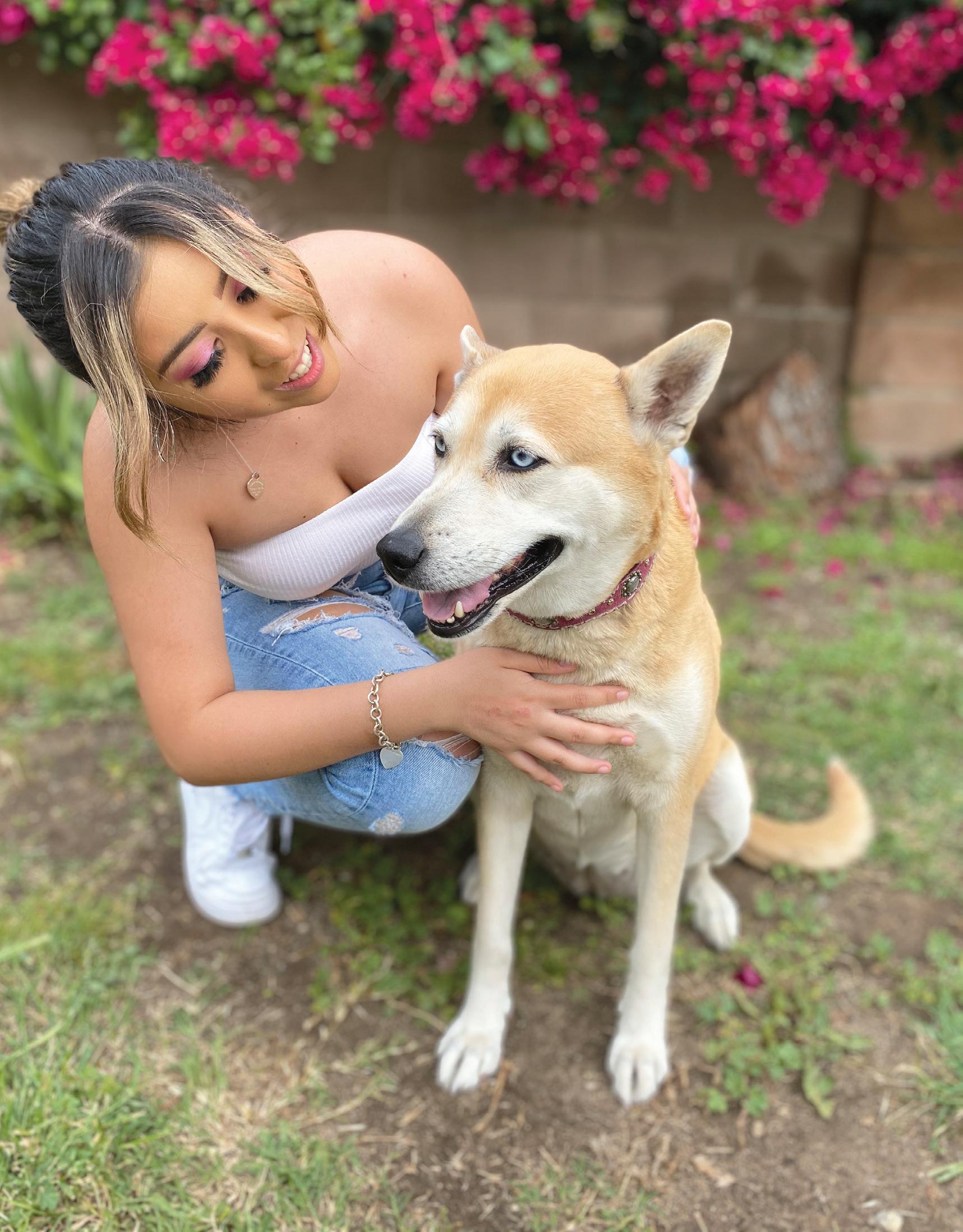
“Life is a beautiful thing, and astrology is just a way of understanding the creatures of this earth a little better,” Flores said. “They named him Zeus. Fitting, considering he’s a pitbull whose sign is a Taurus.”
Yesenia Flores is 20 and a psychology major at California State University, Channel Islands. She’s been teaching herself astrology— or dogstrology—as she calls it, for the last three years. She considers herself to be a spiritual connection to the universe.
She moves in a tight circle and never has clients, only what she calls “furbabies.” Her home is a sanctuary where she can interact with the dogs and serve as a spiritual guide to their owners when there are signs of
26 thebullmag.com
Dog astrologer Yesenia Flores smiles with her dog Zeus.
Story and photo by: Hannah Davis
Flores doesn’t charge for chart explications or horoscope readings. She believes her gift is something that the universe has given her and will take away if she becomes greedy with it.
Alondra Gutierrez, a family friend, arrives at Flores’ home with her dog
in New Hampshire for more than 20 years and has experience in working with pets and astrology.
“Astrology has been around for thousands of years,” Longacre said. “It comes from ancient Babylonian times, and even then their pets always had some sort of association to the stars and planets.”
all of my astrological experiences will end with happy furbabies,” Flores said. She recalled an experience she had two years ago, where she was asked to assist in a puppy adoption. After making a natal chart of the German shepherd puppies, she informed the adoptee that the litter had the potential to be aggressive because they
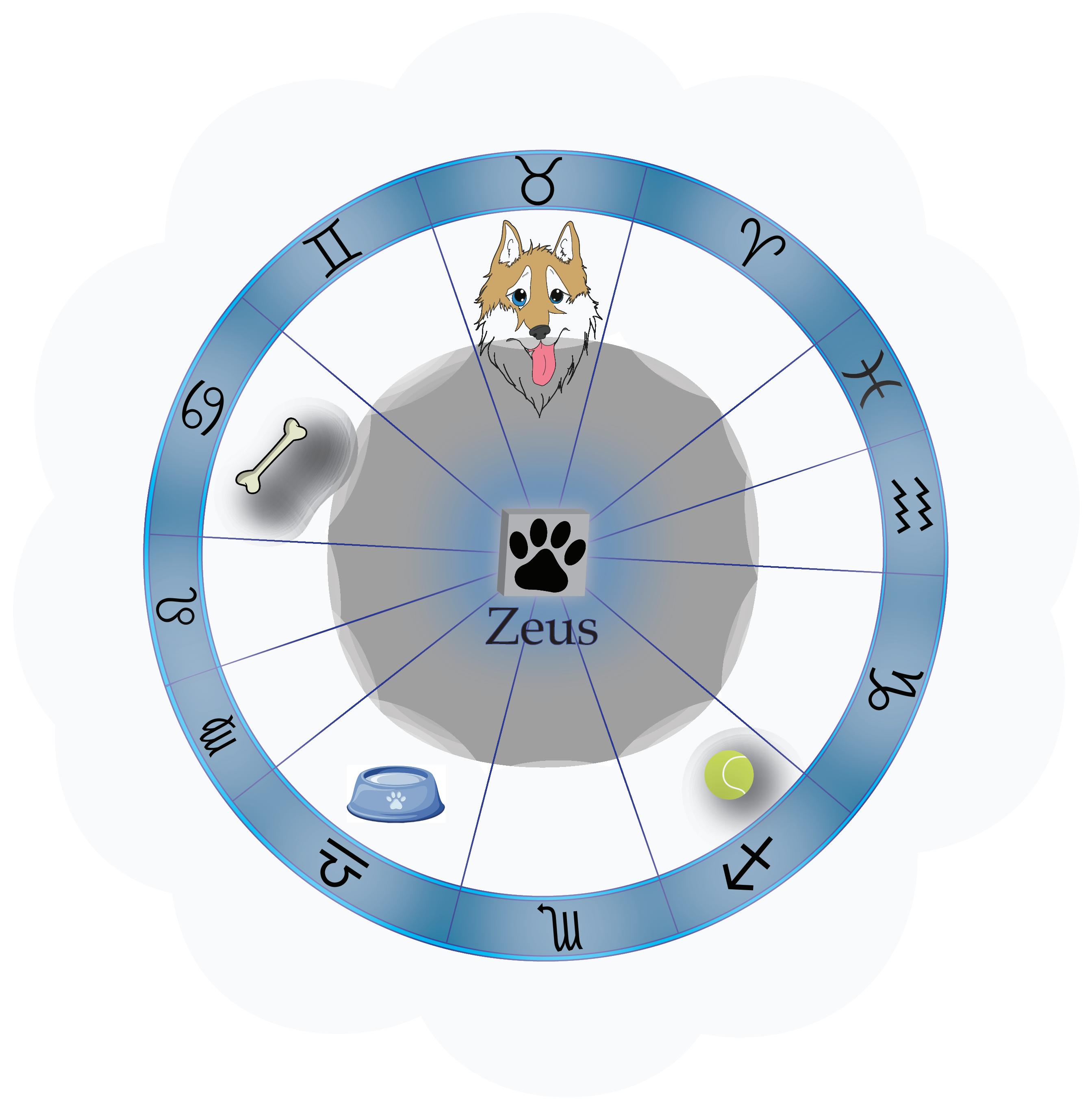
“Astrology is a mystery older than me, older than everyone I know combined, but somehow it’s been kept alive, and I know that these dogs need me,” Flores said.
Celeste Longacre has been an astrologist
Flores also explained how she has had some not-so-great memories within astrology.
“There is only one time where I thought that I didn’t really want to continue with astrology, and it made me realize that not
miscommunication.
hAnimals 27
Illustration by: Chelsea Westman
Staying safe during COVID-19

General Safety Guidelines
Wash your hands often with soap and water for at least 20 seconds, especially after blowing your nose, coughing or sneezing going to the bathroom and before eating or preparing food. Avoid touching your eyes, nose and mouth with dirty hands. Stay home when you are feeling sick. Cover your cough or sneeze with a tissue, then immediately throw the tissue away.
Pet Safety
Do not expose your pet to outside animals. Keep pets indoors and only let them interact with people inside your household. Stay at least 6 feet away from other people and animals while walking your dog. Avoid any crowded public space. Animals around the world have been reported to be infected with the virus that causes COVID-19, mainly after having contact with an exposed person. There is a low risk of animals passing on the virus to humans.
28 thebullmag.com
Know the Symptoms
Fever
Cough
Shortness of breath
•
•
•
Source: Centers for Disease Control California COVID-19 Hotline: (833) 422- 4255 8 a.m. to 8 p.m. Mon. through Fri. 8 a.m. to 5 p.m. Sat. and Sun.
Illustration by: Chelsea Westman
Farewell, Little Pine
Silver Lake vegan restaurant closes during COVID-19 pandemic
Imagine eating vegan food where meat is not only being avoided, but your meal saves lives as well.
A restaurant in the Silver Lake area of Los Angeles was created to serve both purposes. Vegan restaurant Little Pine was not only fully vegan and plant-based, but also donated proceeds directly to foundations that support animals.
In the wake of COVID-19, Little Pine is closing. It is not known if it will ever reopen, according to Leslie Charles, the former manager of the restaurant for almost five years.
“The employees, including myself thought it would be a temporary furlough, however, after a month, the owner, Moby, terminated the entire staff and still has given no information if Little Pine will ever re-open,” Charles said. “In times like these, one gets to see someone’s true nature. Someone’s true character and actions/ inactions speak volumes about someone’s moral compass.”
Charles said that supporting animals in
every facet is an essential part in the expansion of vegan restaurants throughout Los Angeles.
“I feel the most valuable experience in working for an establishment that cares so greatly for animals, is not only knowing the work you’re doing matters, but also the likeminded people you get to meet,” Charles said. “I think veganism affects the animals and the earth unlike any other movement out there. Veganism is one of the only true ways of not only saving our planet, but saving animals as well.”
Little Pine was established in 2015 on a mission to provide a vegan haven for people in Los Angeles. Their website states that 100% of their profits go to animal rights organizations.
Charles said that slaughtering animals to benefit humans does not always have to be the way of life.
“The proof is in research and facts,” Charles said. “People have just been slow to catch up with that information, but they are finally listening.”
Lou Oates has been the executive chef at Little Pine since 2017 and has been vegan for the last 15 years.
“We will lead happier, healthier lives that rely less on pharmaceuticals to regulate our body and have a planet hopefully for many years to come rather than face extinction,” Oates said. “I started to acknowledge that when I consumed animal products, not only was I harming myself, but I was also also making a choice that was negatively impacting the planet and the welfare of animals across the globe.”
Little Pine has donated to six charities that defend animal rights:

1. Physicians Committee, which focuses on a plant-based diet.
2. The Good Food Institute, which promotes plant-based alternatives to meat, dairy, eggs and cultivated meat.
3. The Mercy for Animals, which has a mission to “prevent cruelty to farmed animals and promote compassionate food choices and
Animals 29
Story by: Aimee Perez
Leslie Charles, the former manager of Little Pine, sits with menus and notebooks at her Los Angeles home on April 30, 2020, during the Safer at Home order. Photo by: Aimee Perez
policies,” according to their website.
4. Direct Action Everywhere, which uses non-violent direct action tactics to further their cause, such as open rescue of animals from factory farms.
5. Animal Equality, a team of committed and passionate advocates dedicated to creating a more compassionate world for animals.
6. The Humane League, an international nonprofit organization that works to end the abuse of animals raised for food through institutional and individual change, including online advertising, Meatless Monday campaigns and corporate outreach.
Little Pine has also welcomed animals to the mix of patrons that visit their restaurant.

“Tons of animals would come into dine at Little Pine, which was one of the perks of working there,” Charles said. “We of course would allow service animals to dine inside with their owners per regulation, but we also had a patio that accommodated whatever creature great or small came to dine with us.”
Little Pine’s Instagram page shows an assortment of different animals dining at their restaurant.
“The exotic pets that came into Little Pine I would say were more companion animals than pets,” Charles said. “But for exotic animals, I would say opossums, pigs, a goat one time and of course we had my ‘son’
Chip, who was the squirrel who lived on the property and visited us daily, demanded nuts of all kinds, sat in our office chair, ran through my hair and played with toys.”
Charles said that Little Pine was not offering takeout, curbside pickup or using mobile applications such as Postmates or Grubhub to deliver food.
David Busse is the president of Yottability,
an information technology company based in Woodland Hills. Busse has a Bachelor of Science in Business Administration from California State University, Northridge.
Busse said in a phone interview that companies must update their practices when business environments change.
c“You need to adapt or you’re going to be left behind,” Busse said. “Technology, if it’s used properly, is only going to help whoever’s using it. As time goes on, technology’s more prominent in everything we do. My advice to any business is to make sure you understand the technology aspect and understand the importance of the technology aspect.”
While it was open, Little Pine was a safe space for customers who are plant-based and those who wanted to experience something new and beneficial to animals.
Oates said that going vegan not only benefits the planet but also all of the animals in it.
c“If we stop eating animal products, we immediately make a huge impact on carbon emissions, therefore ensuring the longevity on the planet,” Oates said. “Take each day as it comes and try to make a more conscious decision at every meal. Research as much as you can and find some recipes that you like the sound of to try at home. It is all about experimenting, being brave and trusting yourself.”
“I think veganism affects the animals and the earth unlike any other movement out there.”
- Leslie Charles Former Manager Little Pine
The Little Pine interior, visible from the front window, has been empty since its closure in Silver Lake, Calif. on May 9, 2020.
Photo by: Adam Baron
Los Angeles Restaurants Closing Indefinitely
Little Pine is not the only Los Angeles restaurant to close in the wake of COVID-19. Here is a list from Eater.com of other places that have closed and are unlikely to reopen:
1. Auburn : The Melrose restaurant closed in the first week of May because of high construction costs and other financial burdens.
2. Bon Temps : This European restaurant in the Arts District announced a permanent closure.
3. Stan’s Donuts : Open for 55 years, this Westwood shop is closed. “Your support and friendship has meant more than you know,” said owner Stan Berman.
4. Swingers : The Beverly Grove late-night diner is closed.
5. Sushi Ichi : The omakase restaurant in a Pasadena strip mall closed when the dining room closures began on March 15.
 Illustration by: Ashley Shellmire
Illustration by: Ashley Shellmire
Animals 31
With a tender look in his chocolate brown eyes, 21-year-old Encino resident Daniel Habas gazed upon the gentle frame of his small dog, Molly. As he cradled her seemingly defenseless form in his arms, he looked at her with a heavyhearted smile.
His fingers lightly stroked the luscious butterscotch cream fur that bunched up around her neck, creating only a more endearing appearance. Her eyes blinked rapidly as she looked upon her owner with the hint that his loving embrace was overwhelming her spirit. At this moment, it became evident that the connection Habas and his animal shared was a bond of immeasurable love and admiration.
As an owner of four dogs, Habas said that experiencing the relationships grow between himself and his dogs throughout his life helped him understand that these animals behave much like humans.
Walking a Ruff Road
Dog walkers turn passion into occupation
“I’ve grown up with them, and it’s just that they’re emotionally connected to people so if you’ve had dogs for a while they generally pick up on the way
cyou speak, and certain commands and different things,” he said. “You get a kind of bond where it’s almost like they’re a real person.”
Habas’ dog-loving personality led him to discover a way to make money simply by walking people’s dogs.

“I work with a dog-walking company called Wag! that uses an app to connect to people and walkers,” Habas said. “I go through the app and I’m recommended through reviews. I drive to the location, talk to the parent, walk the dog and have a good time.”
However, in recent months, the COVID-19 outbreak has left many businesses closed and millions of Americans have been left either out of a job or working at home.
The information posted on the company website at wagwalking.com provides company-wide changes to procedure and the ways company-assisted walking can
Story by: Nathan George
32 thebullmag.com
Photos by: Adam Baron
“It’s like taking your baby to a stranger. It’s the very same thing.”
- Elena Llamas Dog owner
c
Daniel Habas walks his pomeranianmix dogs Honey and Molly by his home in Encino, Calif., on May 19, 2020.
Photo by: Adam Baron
continue while still acknowledging social distancing measures.
According to the site, walkers and pet owners should work together to ensure a safe “hand-off” of the leash at the door of the pet owner’s home. Both parties are advised to wash their hands before touching the leash and the company requests that the dog harness and leash be fastened to the animal upon the walker’s arrival.
Despite services remaining operational through the app with social distancing measures, Habas said that shortly after quarantine began, he has not been able to find many pet owners who want his service.
“I would look on the app, and it would show me available walks and it gives me a distance of how far they are,” Habas said. “I generally set it to five-to-six miles in my area, and I usually have a couple here and there so I do them. But recently I haven’t been able to find any walks within even 10 miles.”
Habas added that he has not walked an animal through the Wag! app in nearly a month.
Experts in the dog world are also acknowledging the difficulty in finding adequate local animal care and services.
Freelance medical writer and veterinarian Catherine Barnette, DVM, stated in an article published on www. vcahospitals.com that dog walkers and dog owners should work together to create an experience that is safe and that efficiently allows walking services to safely proceed while facing the continued risk toward exposure to the COVID-19 virus.
“Many clients working from home may still want dog walkers to provide daily exercise for their dogs,” Barnette wrote. “Clients that become ill may need them now, even more than ever. wIt is important to understand how to provide care for clients’ dogs in a way that is safe for both them and their clients.”

Barnette also wrote that walkers and owners should maintain a distance of six feet during conversation and that leashes should be handed off as safely as possible. She advises that both parties should frequently wash their hands and sanitize other surfaces that could cause direct contamination during the services.
In addition, Barnette said animals of owners that may test positive for the virus should be handled with caution.
“Pets’ coats could potentially become contaminated with coronavirus,” she wrote. “Because there are rare cases of dogs
and cats testing positive for COVID-19, it is important to handle pets from homes with COVID-19 positive people with caution.”
Another individual animal service provider who has been affected by the ongoing pandemic is Northridge resident Elena Llamas, a mother and wife who works in accounting as her primary source of income. She is an owner of nine small dogs and is a self-proclaimed dog “addict.” It is because of her passion for these animals that she also spends much of her time serving as a dog-sitter.
Llamas had been animal sitting since October 2018, but decided that she was going to stick with it indefinitely when she witnessed how many people came to her with their animals during the Woolsey Fire in November 2018.
“At that point, I had like 15 dogs,” Llamas said. “Everybody was getting along and they were here from three to five days depending on what was going on with their owners’ homes. Many of them lost their homes. Many of them had been evacuated and didn’t have a place to go or didn’t know wherever they were going.”
Taking care of animals who need a place to stay is important to her and she said that she wants dog owners to be at ease knowing they can come to her for help.
“They go with the peace of mind knowing their pet will be in excellent hands,” Llamas said. “And that’s priceless. It’s like taking your baby to a stranger. It’s the very same thing.”
Llamas said that due to the quarantine, her business in dog-sitting has been slow, except for her two regular clients who still drop by their animals on weekends.
Although Llamas said that normally she was the one taking care of clients and communicating with them for drop-offs and pick-ups, her husband and her son help when she is not there to receive an animal or have it picked up.
“We’ve become a team,” Llamas said. “Each one of us does as we can, helping whenever necessary. It’s good because at the beginning there was some reluctance to do it.”
Even though it may seem daunting for one to care for up to ten dogs at a time, Llamas said that she never feels too stressed. She believes it’s her duty to provide quality care for the dogs.
“I get pleasure out of doing it,” Llamas said. “Pets are to be loved and pampered. If you’re not going to have a pet and you’re not going to do that and be committed to it, then don’t have a pet. It’s very simple.”
Daniel Habas poses with his dogs Honey and Molly by his home in Encino, Calif.
Photo by: Adam Baron
Animals 33
As a kid, I grew up with a keen fascination for all kinds of animals.
I have owned a cat since I was 7, and I thought I was going to pursue veterinary medicine going into college as a freshman. As I fell in love with journalism, my love for animals has remained.

The fact that The Bull Magazine never had animals as a theme made me spring into action. I realized I could incorporate both of my favorite passions into one project to bring comfort and smiles to readers.
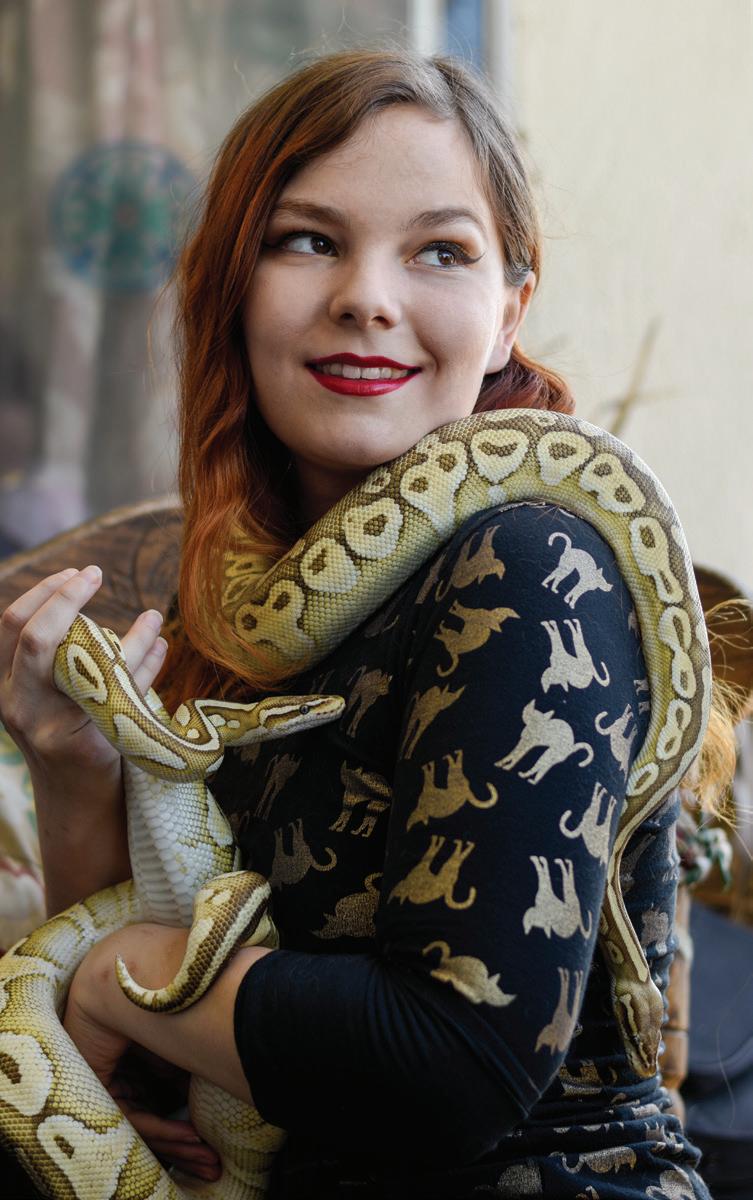
Thanks to my advisers Jeff Favre and Jill Connelly for giving me the guidance and resources to not only become a better journalist, but to not give up when a challenge comes my way.
Being part of the Media Arts Department for two years has opened my eyes to a plethora of opportunities. After working for The Roundup newspaper
Note from the Editor


for most of my time at Pierce College, I wanted to show my appreciation for the department by creating a publication that can be remembered and valued years down the line.
It is a privilege to have served under their wings, as they have given me the skills and tools I need to pursue a career in this field after I earn my bachelor’s degree in the next two years.
During these unprecedented times with the novel coronavirus, our small staff has worked hard to gather these stories and design the pages you have been reading. The pandemic has motivated me even further to pass on the needed feeling of comfort and safety.
If you have a pet, I encourage you to sit with them and reflect on how much they mean to you.
I hope this issue of The Bull helped you feel the warmth and awareness that animals can provide.
Sincerely,
Instructional assistants:
Sean McDonald
Sean Collins-Smith
Chelsea Westman
Illustrations: Ashley Shellmire
The continuous support and guidance you have provided during the course of this pandemic has been extraordinary. Thank you.
Front cover photo by: Chelsea Westman
Back cover photo by: Adam Baron
Model front cover: Saskia Chiesa Model back cover: Starfox the dog

Animals THEBULLMAG.COM




 Villafane Managing Editor
Villafane Managing Editor






 Nathan George Writer
Chelsea
Hannah Davis Writer
Peter
Adam Baron Photographer Aimee Perez Writer
Ornemo Writer
Nathan George Writer
Chelsea
Hannah Davis Writer
Peter
Adam Baron Photographer Aimee Perez Writer
Ornemo Writer






 Jeff Favre Adviser
Jeff Favre Adviser



















 Podrick the guinea pig is one of Chiesa’s ambassadors at the Los Angeles Guinea Pig Rescue in Chatsworth, Calif.
Podrick the guinea pig is one of Chiesa’s ambassadors at the Los Angeles Guinea Pig Rescue in Chatsworth, Calif.














 (Middle right) A newborn goat nurses from its mother at the Pierce College Farm.
Photo by: Chelsea Westman
(Bottom) Goats roam the fields of Pierce College. Photo by: Adam Baron
Copy by: Adam Baron
(Middle left) Natalie Albizo stands with Natalamb, the sheep she watches, at the Sheep Unit at Pierce College. Photo by: Adam Baron
Farm stays open despite campus closure
(Middle right) A newborn goat nurses from its mother at the Pierce College Farm.
Photo by: Chelsea Westman
(Bottom) Goats roam the fields of Pierce College. Photo by: Adam Baron
Copy by: Adam Baron
(Middle left) Natalie Albizo stands with Natalamb, the sheep she watches, at the Sheep Unit at Pierce College. Photo by: Adam Baron
Farm stays open despite campus closure





 Molly the dog, photo courtesy of: Nathalee Montano
Molly the dog, photo courtesy of: Nathalee Montano








 Illustration by: Ashley Shellmire
Illustration by: Ashley Shellmire






